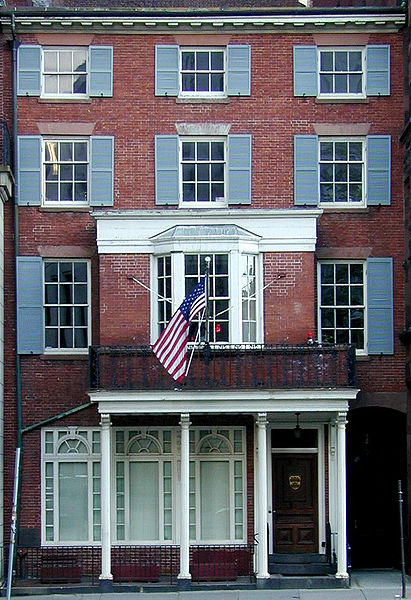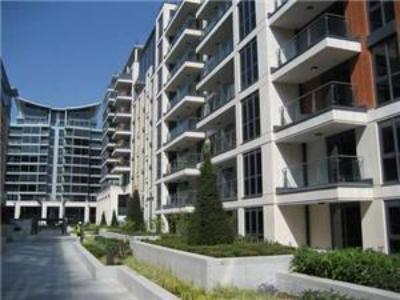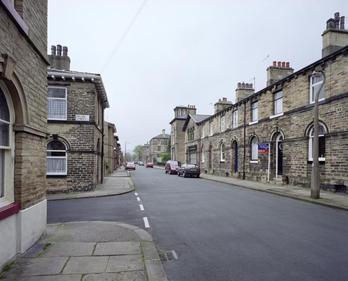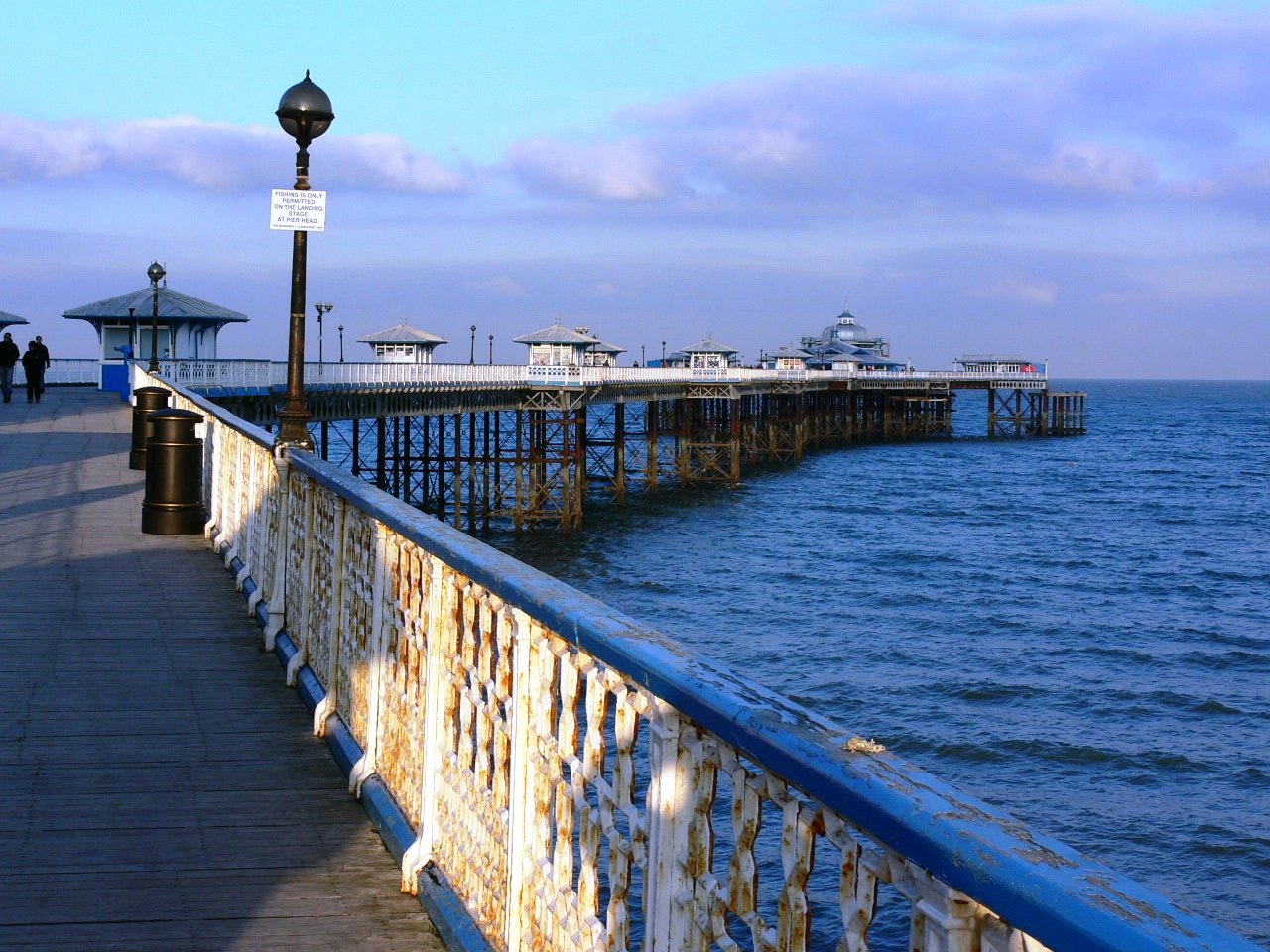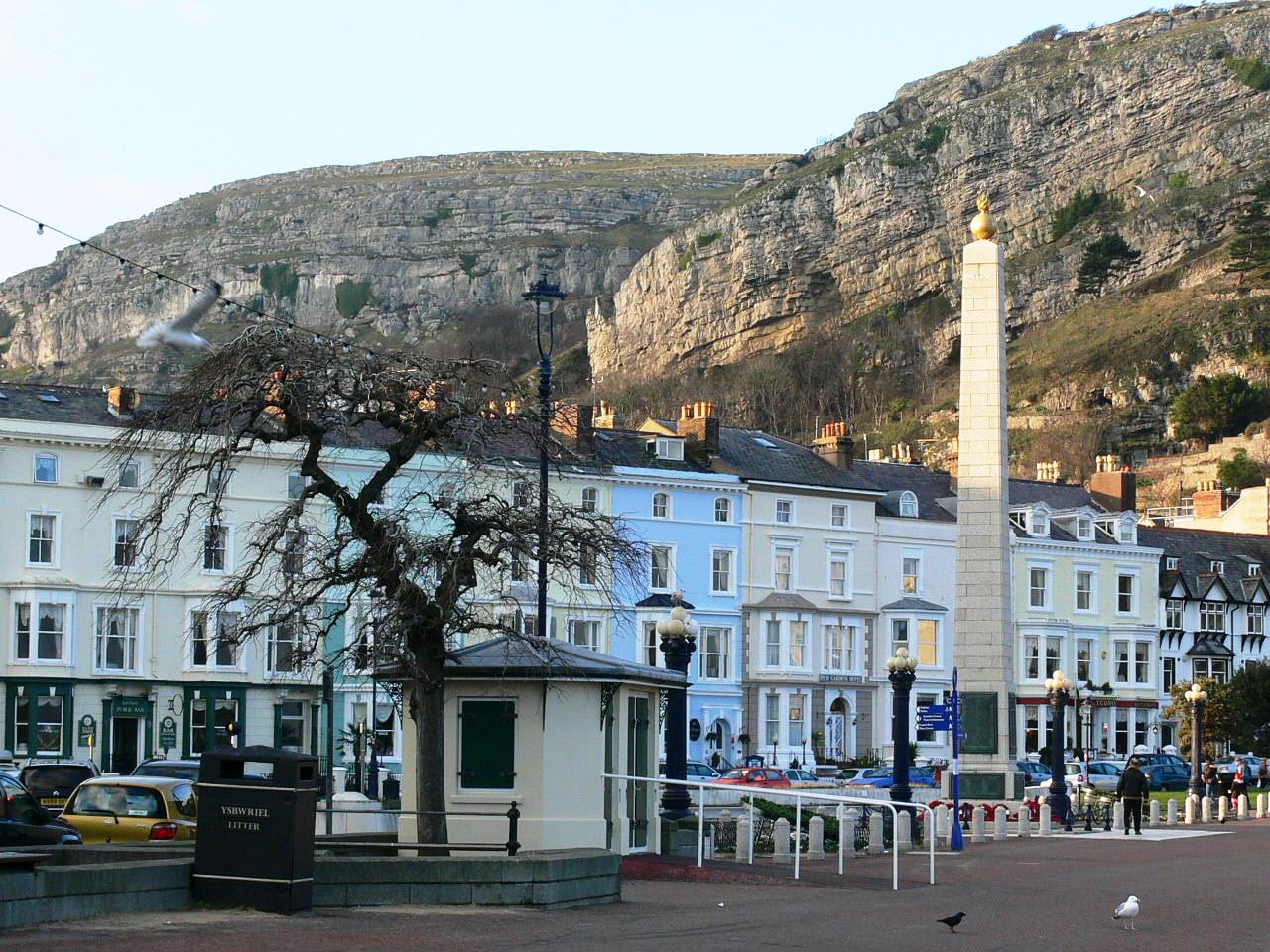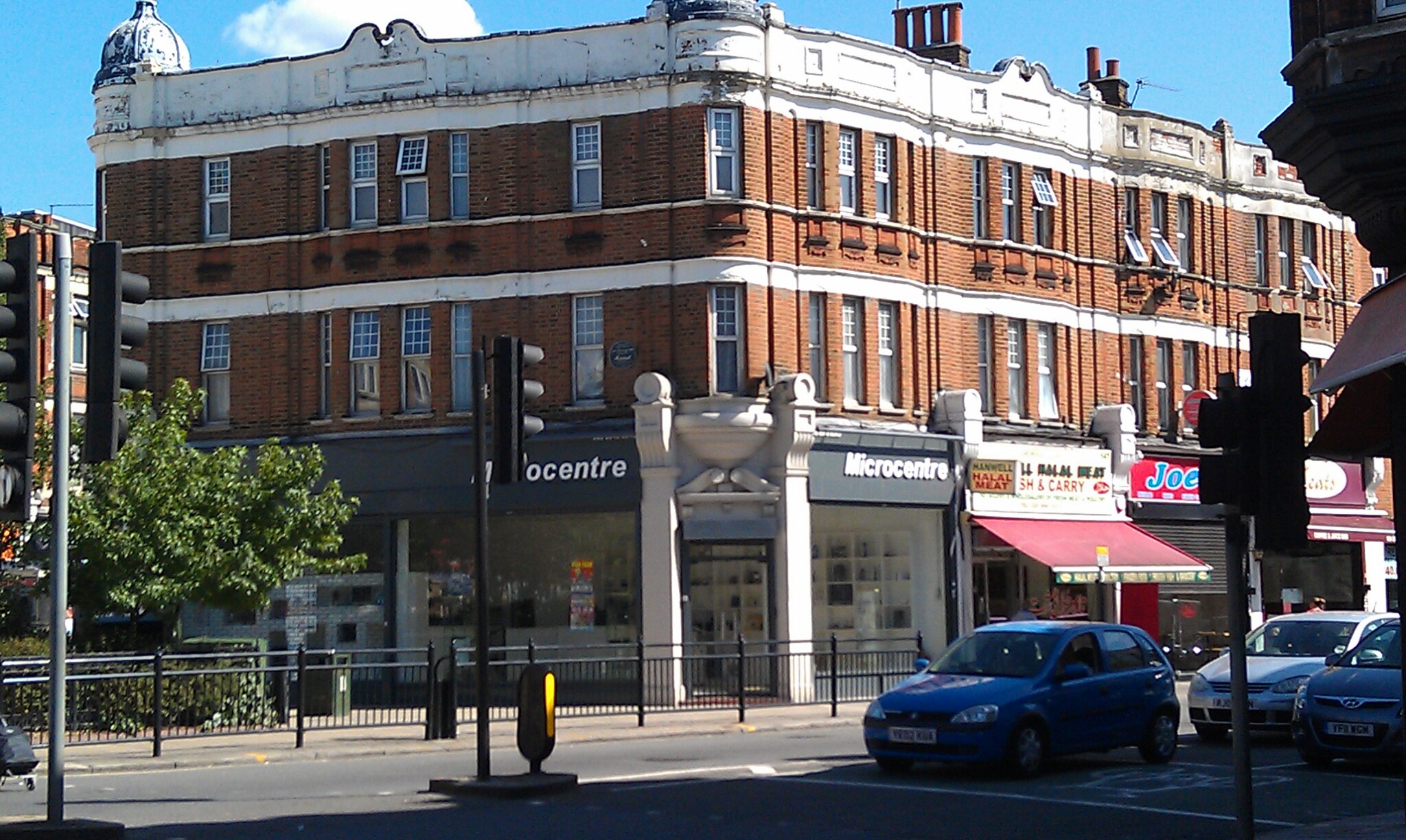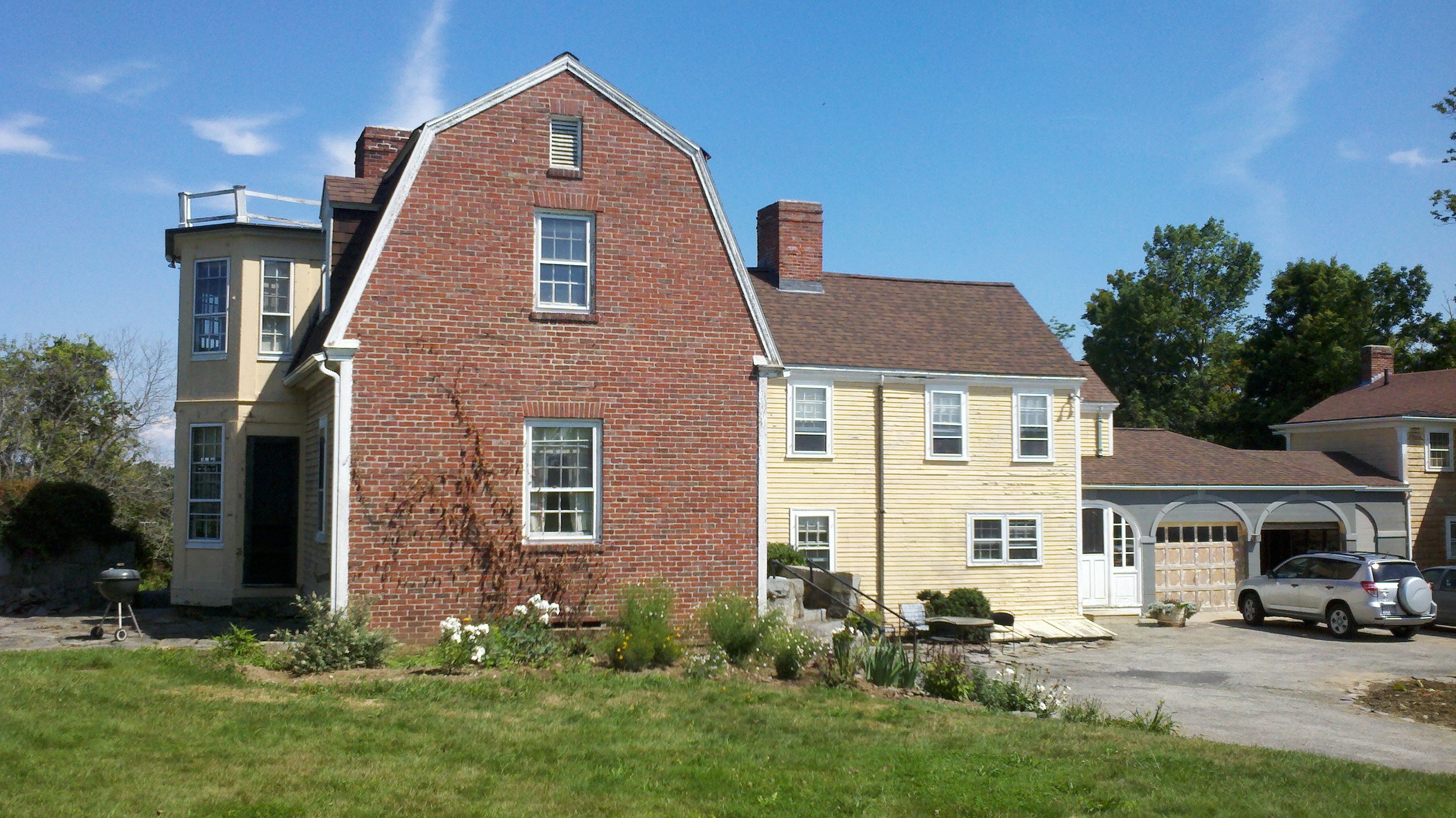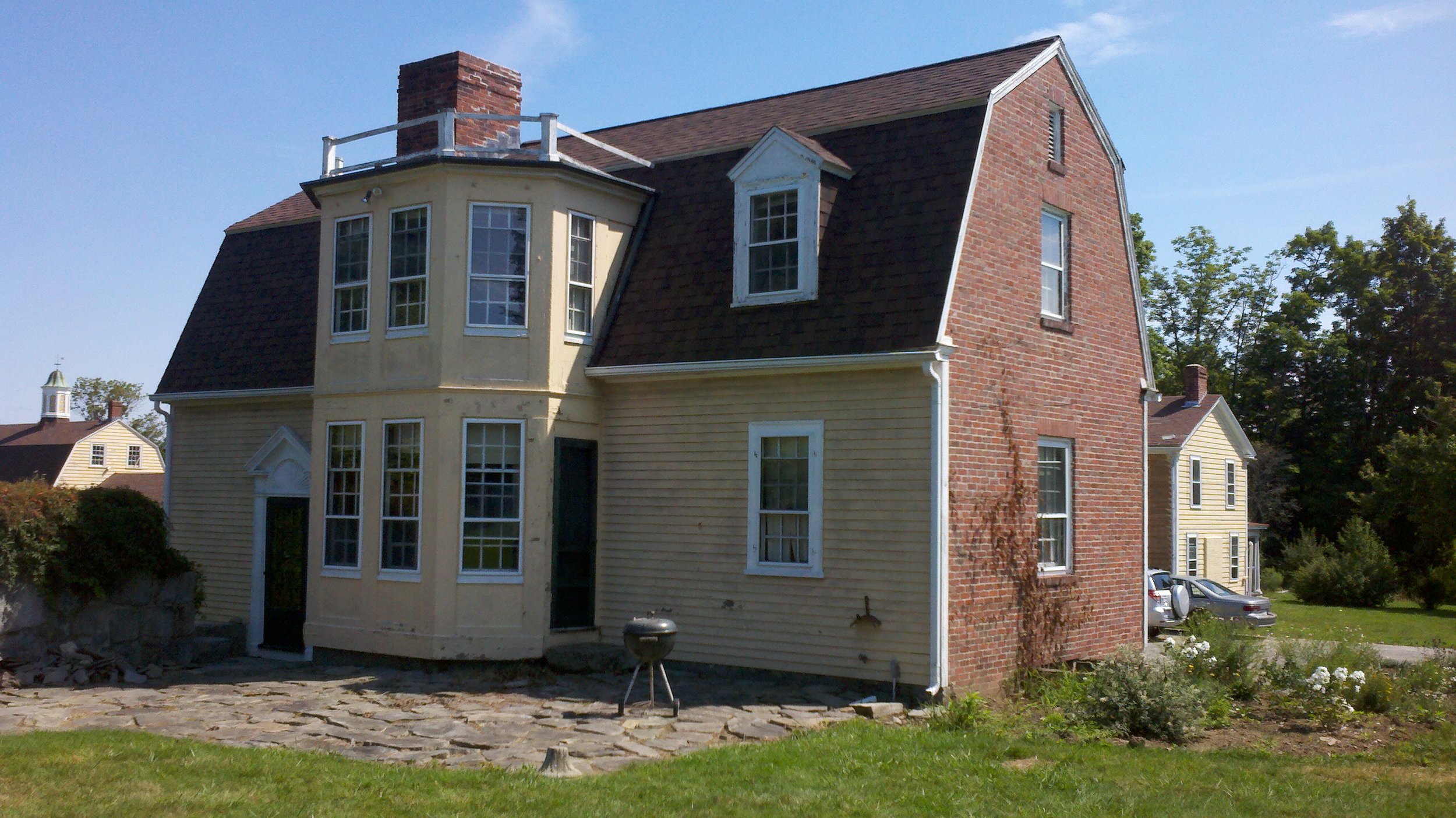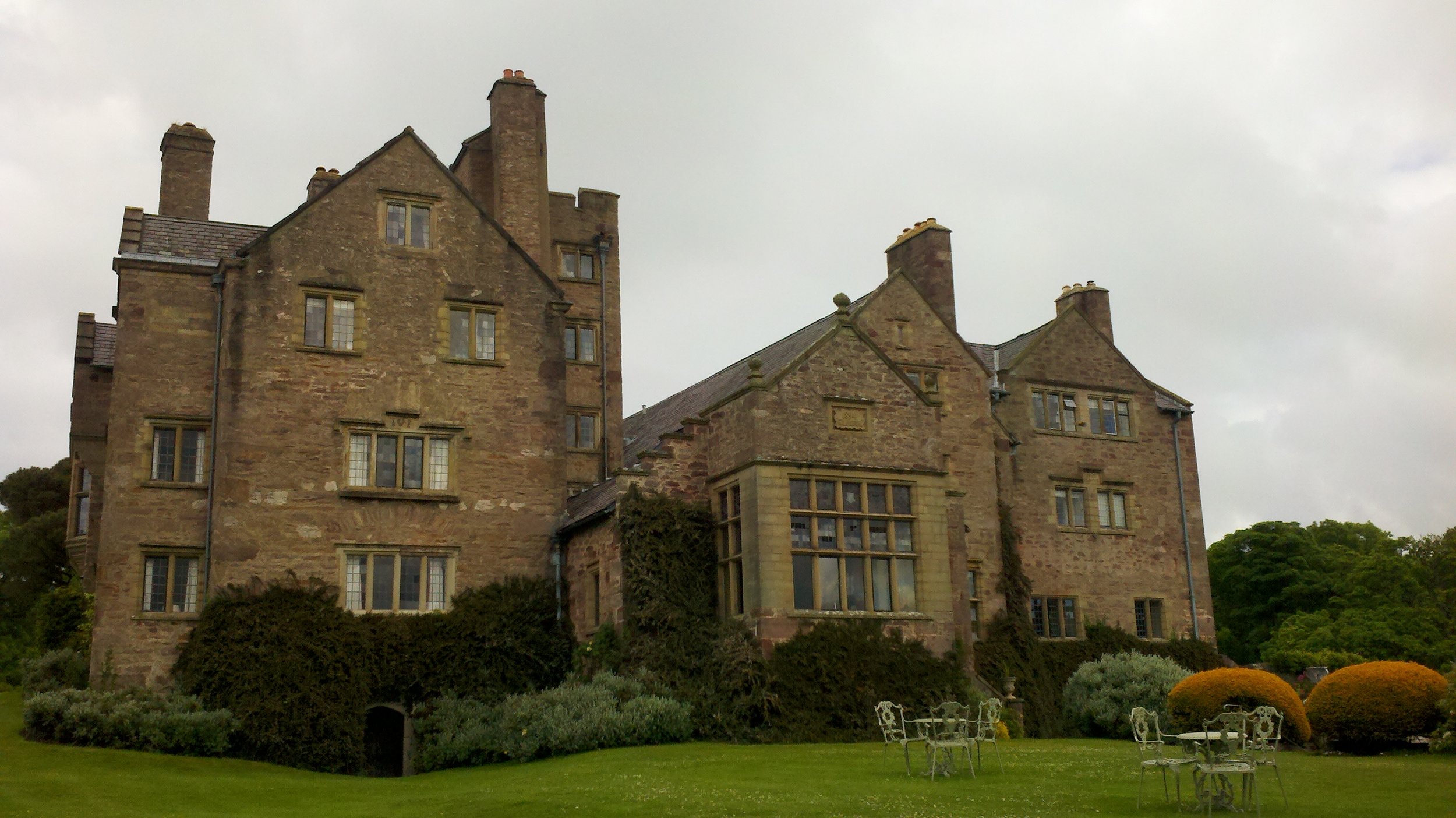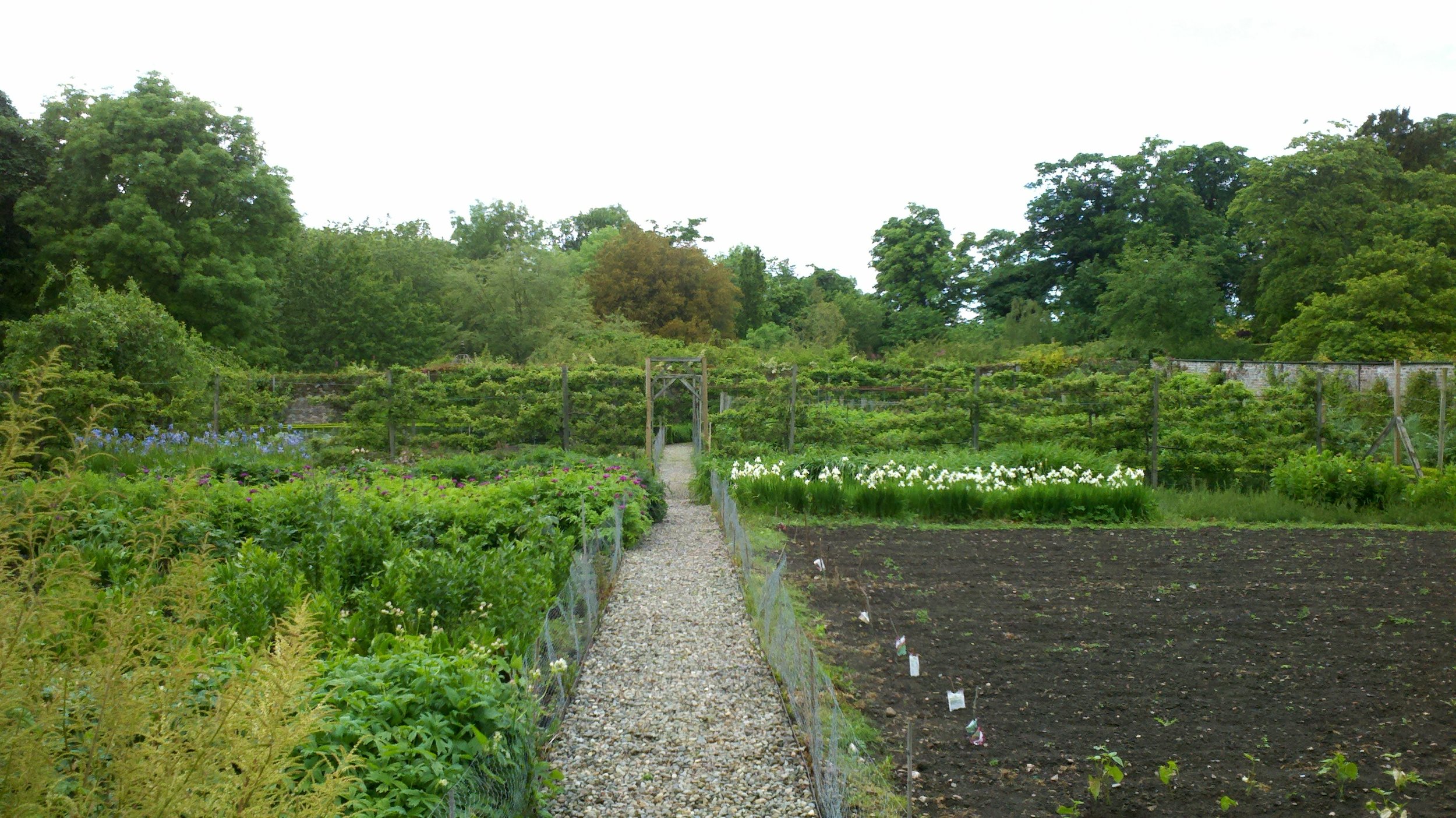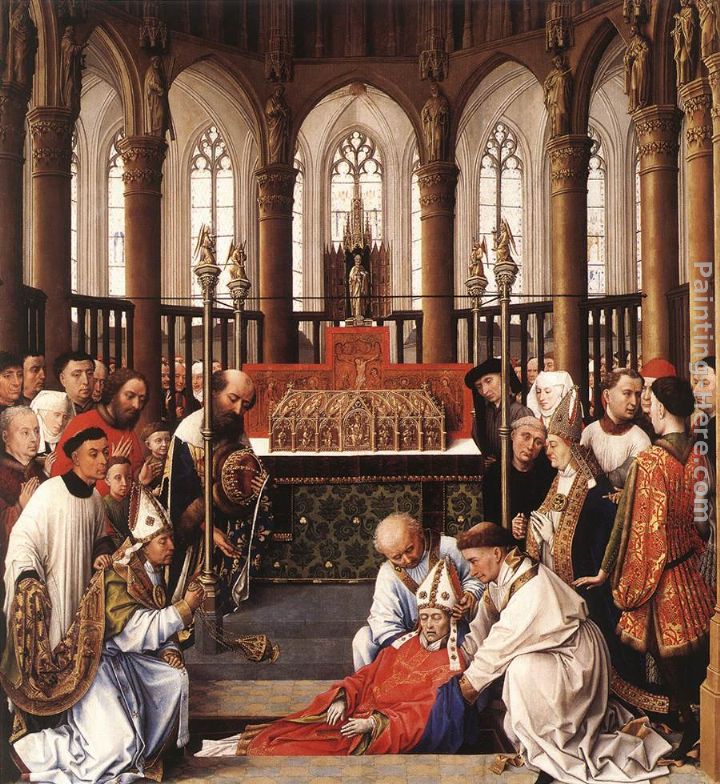I see nothing of Scotland in this design. t reminds more of a hurriedly erected concrete seaside hotel that might be seen in the home country of the architect, Spain.
The Good, and the Bad and Ugly: Harmony and Cacophony In Wales and Princeton
Something Harmonious, Something Monotonous, Something Cacophonous
A Description of the Theory of Harmony and Proportion in Renaissance Architecture
Rudolph Wittkower (1901-1971) contrasts the approach of architects from the High Renaissance period, who relied largely on musical theory for their mathematics, with those of the ancient Greek and the medieval period, who used geometric constructions based upon the triangle, the square, and the pentagon.
Beauty in the Spiritual Life, Part 3: A Meditation on A Painting of Christ as the Eternal Flower of Paradise
Learning to Recognize Harmonious Proportion: Victorian Suburbs - Bedford Park and Turnham Green, Chiswick, West London
Pattern, Geometry, and Abstract Christian Art
"Geometric pattern is the abstract art of Christianity."
We tend to think of abstract as something that has come about only within the last one hundred years. But liturgical artists have had their own form of abstract art for nearly two thousand years. Geometric pattern is the abstract art of Christianity.
God made all of creation, visible and invisible, to teach us about Himself. When we perceive the order and pattern that is inherent in creation, the numbers that underlie all of creation, we see the thumbprint of God.
Geometrical forms, built up from mathematical (numerical) forms, are a symbolic expression of Christian Truth. They represent the thoughts of God.
In the Christian world, numbers have both a quantitative meaning and a qualitative meaning. They tell us the amount of some thing (quantity) but they also tell us about the thing itself. (qualitative.)
A carton of a dozen eggs, for example, holds a quantity of 12 eggs. But the number 12 also has a symbolic meaning. it may represent the 12 tribes of Israel, the 12 apostles, 12 signs of the zodiac, or 12 months of the year. Which of these symbols the number represents will depend on the context in which it is used.
In the context of a work of sacred art, depending on the other elements of the work, 12 eggs could represent the New Covenant, a new Church emerging from the "sealed tomb" of the old Law, resting on the foundation of the twelve apostles.
But this qualitative and quantitative language of numbers can also be used to construct abstract, i.e. non-representational, patterns that can lead us to contemplate heavenly things. Medieval manuscript paintings often have a geometric pattern serving as the background as a symbol of the order of heaven.
The work above is a design for a church floor, completed as part of the Masters of Sacred arts program at Pontifex University. It incorporates a specific type of scrolling pattern known as a guilloche. This is a meditation on Christ in the form of a geometric pattern.
Down the middle axis of the design are three shapes. The first shape at the top contains the symbol for "alpha," the first letter of the Greek Alphabet, The bottom shape holds the symbol for "omega," the last letter. Alpha and omega, the first and the last, the beginning and the end, come together in the middle in a "Christogram" a symbol representing Christ. Jesus Christ is the alpha and the omega, the first and the last, the beginning and the end. Christ is the mediator between man and God. In the ancient world, the number "2" was a mediator between the numbers 1 and 3. The number "2" then, represented a mediation between two extremes, heaven and earth, divine and human, God and man. We might also say then that Jesus, the second person of the Holy Trinity, mediates between God the Father and God the Holy Spirit.
Flowing around these central shapes is a bough of laurel leaves in a guilloche pattern. Laurel leaves are a symbol of victory, Christ is victorious over sin and death. The laurel bough weaves around eight medallions which contain another type of Christogram, in this case a cross and the letters INRI. They serve to remind us that Christ obtained His victory through death on a cross, a death at which He was proclaimed Jesus of Nazareth, King of the Jews.
And "eight" medallions also have a hidden meaning. Eight is the number of the victorious resurrected Christ and a redeemed world. Eight is the sum of "7" the number of totality and completion, and the number "1," representing the singularity of God. The number "8" is used in baptismal fonts as a symbol of a new life brought from darkness into light.
The victorious Christ is the eight day, heralding a new birth and a new creation. He brings the world from darkness into light.
There is no reason we cannot imbue the design of our churches with such geometric patterns and symbols that hold a rich symbolic language revealing the truths of the invisible world that are hidden within the visible. All it takes is the knowledge, and the will.
this article originally appeared at www.DeaconLawrence.org
______________________________________
Pontifex University is an online university offering a Master’s Degree in Sacred Arts. For more information visit the website at www.pontifex.university
Lawrence Klimecki is a deacon in the Diocese of Sacramento. He is a public speaker, writer, and artist, reflecting on the intersection of art and faith and the spiritual “hero’s journey” that is part of every person’s life. He maintains a blog at www.DeaconLawrence.org
Liturgical Form Manifested in the Mundane - the Famous K2 Telephone Box
 I recently visited the OQ Farm near Woodstock in rural Vermont. It is a retreat center which is connected to The Sword and Spoon Foundation, an ecumenical group interested in promoting a Christian culture of faith and beauty. The occasion was a gathering of Christian artists, musicians, and filmmakers, who gave talks about their work and shared ideas about the transformation of the culture.
I recently visited the OQ Farm near Woodstock in rural Vermont. It is a retreat center which is connected to The Sword and Spoon Foundation, an ecumenical group interested in promoting a Christian culture of faith and beauty. The occasion was a gathering of Christian artists, musicians, and filmmakers, who gave talks about their work and shared ideas about the transformation of the culture.
I was curious to see this place that is quietly become a hub for artistic renewal. If you look at the program of events over the summer, for example, there are two workshops by internationally known Russian iconographers, Anton and Ekaterina Daineko, who are coming from Russia to teach here. Also, the highly respected Catholic playwright and screenplay writer Buzz McClaughlin is offering a a workshop on story development. I first met Buzz about 10 years ago, and read his book on the structure of story narrative; I have kept in touch with him ever since, because his ideas regarding engagement with the culture, in the context of film, are in harmony with my own. The organizer of these events for the OQ Farm is Keri Wiederspahn, who is herself an accomplished icon painter and teacher in the Russian tradition.
One evening while I was at this event, as the sun was going down, I took a walk around the property and a particular detail caught my eye, a red English telephone box sitting between the farmhouse and the barn. This was a nice coincidence, since the K2 telephone box was described in a book I had just read, Roger Scruton’s excellent How to Be A Conservative (a review of which will appear on this blog shortly).
I asked about this and was told that it had been at the farm for some years, placed there by previous owners, but the current management had decided to keep it.
Why would someone have gone to the trouble of importing a heavy chunk of painted steel at a cost of what must have run to thousands of dollars in the first place?
I suggest that the story of the K2 telephone box can explain why, in many ways a humble piece of street furniture could become an icon of what we are seeking in cultural renewal, and how, unlikely as it may seem, the liturgy is connected to this.
This begins with the Victorian Neo-Gothic movement in architecture, which had its roots in the mid-18th century, but became popular in the first part of the 19th with the rise of High Anglicanism and the legalization of Catholicism in Britain. One of the most influential figures during its rise in popularity was the Catholic convert, architect A.W. Pugin.
It has been said that “historically, all the great art movements began on the altar,” and this includes Neo-Gothic architecture. A style which began as the model for new churches then became a standard for civic buildings and homes in Victorian England. Many of these English architects were hired by Americans, and introduced the Neo-Gothic to cities int he United States. In the eastern part of the country in particular, there are many wonderful churches, colleges, and civic buildings in this style.
Some time ago, I featured on the NLM a small Neo-Gothic church in Maine, St Andrew’s, which was designed by the English architect Henry Vaughan. He was involved in the design of many grand churches in New England, and also one of the architects of the Episcopal Washington National Cathedral.
St Patrick’s Cathedral in Manhattan is another famous American Neo-Gothic church, built in the middle of the 19th century.
 |
With these liturgical buildings as their archetype, we see architects bringing the Neo-Gothic style out into the civic buildings of the city. As a result, their form is derived from, and points to, that which is connected to and in harmony with the liturgy.
Here is St Pancras Station hotel in London designed in the 1850s by George Gilbert Scott, exterior and interior:
 |
 |
It was George’s son, Sir Giles Gilbert Scott, who designed the last completed Gothic church in England, Liverpool Anglican Cathedral. This was started in the early years of the 20th century and completed in 1978, when it was opened by the Queen. I was a schoolboy living about 10 miles from Liverpool at the time, and I can remember being awestruck when I visited it. We were told stories at school of stonemasons who had worked on this one building for their whole working lives, just as in medieval times.
Contrast the above with Liverpool's Catholic Cathedral, started and finished in the 1960s. It is known by the locals as 'Paddy's wigwam'.
 |
| Image from Wikipedia by John Driscoll |
Moving on as quickly as we can from the concrete teepee, we can consider another civic building that is derived from the liturgical style, one of the most famous buildings in the UK. Westminster Palace, including the Houses of Parliament, was designed by Sir Charles Barry. The iconic Elizabeth Tower, as it was re-named in honour of our present Queen, which houses Big Ben, was designed by Pugin, who was working under Barry on the project.
And now, in the foreground we see the familiar site of the red telephone box, looking at home in its urban surroundings.
The telephone box was designed by the same man who designed Liverpool Anglican Cathedral, Sir Giles Gilbert Scott. Although this designer was steeped in Neo-Gothic architectural design, the inspiration for this came from the architecture of the 18th century Neo-Classical architect, Sir John Soane, whose in London house is a famous museum. At the time of the design competition for the K2 in the early 1920s, Giles Gilbert Scott was a trustee of the Soane museum; his telephone box is influenced by the mausoleum which Soane himself designed. This is in the gardens of St Pancras Old Church, just around the corner from the railway station in London.
Scott designed the K2 and the subsequent modifications including the most common, the K6 designed by him in 1935. This telephone box sits as happily in the city, in the shadow of the Houses of Parliament, as it does beside the rural colonial architecture of America (which, incidentally, has its roots in Neo-Classical, Palladian architecture, but that’s another story.)
Scott’s sense of proportion is influenced by his training as an architect. The basic proportional scheme is common to both styles, and broadly speaking, to all traditional Western architecture prior to about the Second World War, going back to the ancient Greeks.
I think that it is interesting that one of the leading architects in the nation took the design of a piece of street furniture so seriously the he applied to it all the skill and experience that he might also employ in designing a cathedral, while realizing that one uses greater restraint and simplicity in designing a phone box than one would in designing a cathedral.
The design of the phone box directs us intuitively to the liturgical architecture that traditionally the design of the civic buildings participates in, in all styles, not just the Neo-Gothic. Ideally, this crystallizes in exemplary fashion in the place of worship, which contains the heartbeat of the city. As the tabernacle and altar should be the focal points of the church design, so the cathedral should be the focal point of the city.
The numerical source of traditional proportional schemes was originally derived in the pre-Christian classical world from the observation and analysis of the order of the cosmos, which it was believed gave rise to its beauty. These were adopted by Christian culture, and employed by architects as a matter of course until the period between the wars in the last century. Because it conforms to this cosmic beauty, this little telephone box, like a village church, looks at home in the rural beauty of both an English village and a Vermont farm. It is a simpler design than a cathedral, or a hotel, or even a farmhouse, but that is as it should be; after all, one of the attributes of beauty is due proportion - it is appropriate to its place in the hierarchy of human activity.
While the ultimate expression of this beauty will ideally be in the place of worship, this is not the end, for the beauty of the cosmos and the beauty of the culture direct us to heavenly beauty, and ultimately, to the beauty of the Creator Himself, who left His mark on Creation and inspired the culture of beauty created by man.
Here are some more pictures of phone boxes in English villages. They are so beloved that even in this age of mobile phones, when the need for them has long since past, people keep them as familiar and beautiful icons in the scenery. Sometimes they find an alternative use for them, such as a miniature lending library.
The Vermont phone box is one of many that have been transported to the US, because of their beauty. Here is one on the campus of the University of Oklahoma:
This is the first photograph so far in which the box looks somewhat incongruous in its setting. The imposter in this scene is not the phone box, however. Rather, it is the featureless brick wall of a building, which dominates as a result of its size and aggressive ugliness. This is the building that dissents from a participation in cosmic beauty.
You might ask why the box is K2, and not K1? The answer is that the K1 design was rejected by the phone company because they couldn’t persuade the London boroughs to allow it on their streets because of its ugly design. So they ran a competition for a new design which, they hoped, would be appealing enough to persuade the local governments to adopt this new, cutting edge technology. One wishes that today’s utility companies would go to similar lengths in the design of such things as electricity pylons or wind turbines!
This is the reason why the OQ Farm is appropriate as an artistic retreat. It’s the countryside, the buildings, and even the telephone box all speaking to us of the cosmic beauty, which in turn directs us to Beauty itself, giving us, as Benedict XVI puts it, an insight into the “mind of the Creator!” This is an inspiration for all hoping to create beauty for the greater glory of God!
Pictures from the Way of Beauty explained: Attingham House, Shropshire
A perfect exemplar of traditional harmonious proportion. And how modern research supports the traditional consensus for what is beautiful.

This is a picture that is only referred to in the book. For various reasons we were unable to include it in the book. I visited Attingham park in Shropshire in the Midlands area of England with my icon painting teacher Aidan Hart. We went primarily to enjoy the extensive grounds which are beautifully landscaped. I always thought that it was made in the 17th century, but in fact I notice now that it was build in the late 18th century.
It is a National Trust property, which means that it is owned by the state and considered a place of outstanding interest and beauty. When I was there I noticed the proportional layout of the main house, as seen in this view above. What makes this particularly worthy of study is how simple the design, yet how beautiful. If it were not for the Palladian style portico (the grand columned porch that leads to the entrance of the building) the main house would be just a square block. One might argue that there was very little in terms of design to differentiate it from a modern housing block.
Both have windows and doors in a rectangular facade. Yet the modern building is no tourist attraction. In fact it was described in the website where I saw it as one of the seven most notorious housing projects in the US.
What gives Attingham House its beauty is the proportion? Proportion is the consonant relationship between three or more objects of different size. You cannot have pleasing proportion when everything is the same size as in the modern building shown. The basis for theories of harmonious proportion are consensus - people have observed since the ancient Greeks how most people react psychologically to different proportions. The Attingham House proportions are made apparent by the different window sizes associated with the three stories. If you count the panes of glass there are 6 in the lower floor, 4 in the second floor and 2 in the upper floor windows. The proportion would be expressed mathematically as 3:2:1. This corresponds exactly to the traditional proportions based upon the lengths of pipes that produce pleasing combinations of musical notes developed by the ancient Greek philosopher, Pythagoras (who we talked about in the last of these features, here.)
It seems that modern science is beginning to catch up. Someone recently contacted me to tell me about this book by Colin Ellard, Places of the Heart in which a psychologist conducts studies to see how different designs affect the mood of people.
If the designers of modern housing projects had made use of such proportions, even such mass housing could elevate the spirit in the same, way.
Proportion Adds Value to Property in Boston
![]() We can make a Beacon Hill anywhere This past weekend I drove down to Boston from southern New Hampshire to meet a friend who was visiting for the weekend. As we walked around town we wandered into the Beacon Hill area. This is the old heart of the town and full of elegant 18th-century terraced homes. They are built in a variation of the style that in England we would call Georgian. I’m not sure what it is called here, perhaps ‘colonial’ style? These are right at the top end of the price range for property in Boston.
Why are they so sought after? Well location will have a lot to do with it certainly. You would probably pay a fortune for the ugliest shoebox here if it could take a bed. But I would say also that their beauty is a big factor too. Beauty adds value because it stimulates greater demand and pushes the price tag up. And why are they beautiuful? Two hundred years of New England weather softening the edges on the red-brick or cobblestone forms probably adds something. But it is more than this. The main reason, I suggest, is their harmonious proportions.
We can make a Beacon Hill anywhere This past weekend I drove down to Boston from southern New Hampshire to meet a friend who was visiting for the weekend. As we walked around town we wandered into the Beacon Hill area. This is the old heart of the town and full of elegant 18th-century terraced homes. They are built in a variation of the style that in England we would call Georgian. I’m not sure what it is called here, perhaps ‘colonial’ style? These are right at the top end of the price range for property in Boston.
Why are they so sought after? Well location will have a lot to do with it certainly. You would probably pay a fortune for the ugliest shoebox here if it could take a bed. But I would say also that their beauty is a big factor too. Beauty adds value because it stimulates greater demand and pushes the price tag up. And why are they beautiuful? Two hundred years of New England weather softening the edges on the red-brick or cobblestone forms probably adds something. But it is more than this. The main reason, I suggest, is their harmonious proportions.
 What struck me about these houses is how simple and reproducible their design is. They have a simple symmetrical arrangement of windows, one above the other, and a pointy roof. There is some decorative work around the doors and the windows, but it could never be called flamboyant. If I knew about building materials then I reckon I could design one myself. Yet despite their simplicity they look good and it is as a result of the traditional proportionality.
What struck me about these houses is how simple and reproducible their design is. They have a simple symmetrical arrangement of windows, one above the other, and a pointy roof. There is some decorative work around the doors and the windows, but it could never be called flamboyant. If I knew about building materials then I reckon I could design one myself. Yet despite their simplicity they look good and it is as a result of the traditional proportionality.
Given this simplicity and the value that beauty adds to buildings, I am surprised that it hasn't occurred to more developers and architects to study traditional proportion and use it, if only for economic reasons.
Look at the photos in this article. Notice how in every case the window size varies, storey to storey, so that the first is to the second as the second is the third and so on. When this rhythmical progression corresponds to the traditional pattern then the result is elegance. Sometimes the order changed around slightly so that it is not always the largest at the bottom. The dimensions of the first and second might be changed so the biggest storey is always the main living area. These architects didn't play tricks - they put things where you expected them to be, so that the outward signs give an indication of the internal purpose. Similarly, the main door is always more prominent than the servants' entrance. (You can't count on this now. I was at an art gallery recently, which was a modern building made completely of reflective glass and the doorway was indistinguishable from any other panel. There was no indication through the external design where the door was. In fact it was placed offset to one side in a counter-intuitive position, presumably deliberately. I had to wait until I saw someone coming out before I knew where I could get in!)
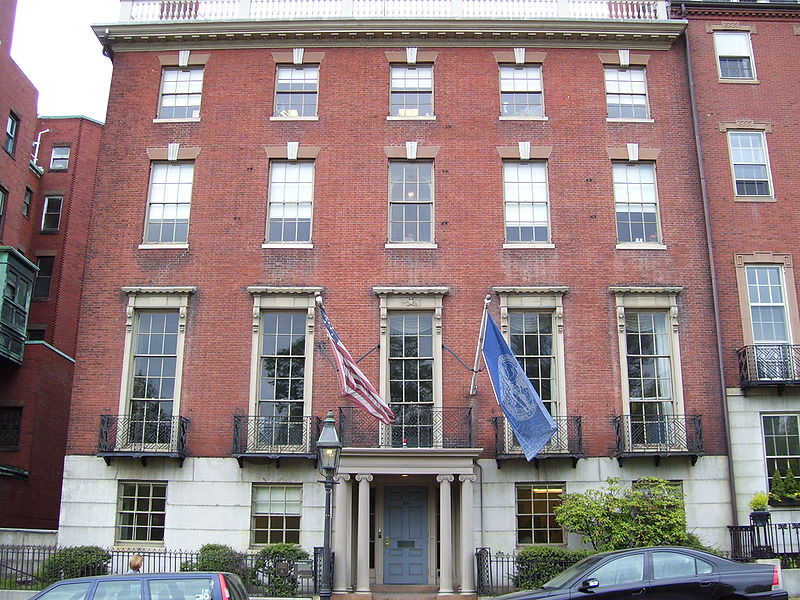 Coming back to Beacon Hill, I am convinced that these houses looked just about as good the day they were built and if anyone chose to conform to these basic patterns today, then it would look good and sell at a high price. This has to be the simplest way for an architect to add greatest value for minimal investment of time and money. There is no need for pastiche – we are not bound slavishly to follow the decorative style of the period in every way, but provided the principles are adhered to, then here is way for modern architect to stand out from the crowd. The mathematics is relatively simple but largely unknown.
Coming back to Beacon Hill, I am convinced that these houses looked just about as good the day they were built and if anyone chose to conform to these basic patterns today, then it would look good and sell at a high price. This has to be the simplest way for an architect to add greatest value for minimal investment of time and money. There is no need for pastiche – we are not bound slavishly to follow the decorative style of the period in every way, but provided the principles are adhered to, then here is way for modern architect to stand out from the crowd. The mathematics is relatively simple but largely unknown.
 So come on architects and town developers. Here’s your chance to make a killing. So let’s see a new Beacon Hill in the US!
So come on architects and town developers. Here’s your chance to make a killing. So let’s see a new Beacon Hill in the US!
Incidentally, the Prince of Wales built an experimental new town on the outskirts of Dorchester in England that conformed to traditional proportions, called Poundbury (right, click to enlarge). The experience there was that although they were slightly more expensive to build, their beauty made demand so high that their price on the open market made the modest extra investment more than worthwhile. You can see more of Poundbury here.
We can build Jerusalem amongst the Satanic housing projects of our inner cities
 Even mass housing can be made uplifting by using traditional proportions
What makes a beautiful building? I would say that traditional proportionality is one vital component that is virtually ignored by all modern architects. The new online course of the Way of Beauty (see the page of that name on this blog) gives the most detailed answer to this question yet. It's all about traditional proportion and harmony which was principle, derived from the patterns of the liturgy, that was used to govern the whole of the culture. All of time and space, not just the beautiful buildings of the past, were ordered according to its principles.
Even mass housing can be made uplifting by using traditional proportions
What makes a beautiful building? I would say that traditional proportionality is one vital component that is virtually ignored by all modern architects. The new online course of the Way of Beauty (see the page of that name on this blog) gives the most detailed answer to this question yet. It's all about traditional proportion and harmony which was principle, derived from the patterns of the liturgy, that was used to govern the whole of the culture. All of time and space, not just the beautiful buildings of the past, were ordered according to its principles.
This is why the building above left, built in the 18th century, is not only still standing, but is also a listed building and is sought after by professionals in the North of England as a fashionable place to live; but many of the equivalent mass housing projects of the 20 century, like the one show below, are already being knocked down. The one shown was Rockwell Gardens which was demolished in 2003 and didn't even last 50 years.
The traditional idea is that certain combinations of dimensions of a building speak to us more clearly than others because they are more beautiful. The modern idea, in contrast, is that there is an infinite range of ratios and proportionalities to choose from and one is no more valid than any other, it’s just a matter of opinion.
The Christian tradition says that certain proportions are beautiful because they reflect the divine order; and the Creator hardwired us to recognize them. When we see something as beautiful in the natural world for example, it is this is divine order – the thumbprint of the Creator in His work – is what we are responding to. The work of man can reflect this as well, with God’s grace and humility and good sense on the part of man. These proportions were used in architecture almost without question through to the end of the 19th century. (To get more information take the online course from this blog or sign on direct here.) By the end of the 19th century, its use seems to have been disconnected from the Christian understanding. When traditional taste was challenged, those who wished to resist the destruction of the old methods were not equipped with underlying principles to defent their case. The Bauhaus movement in Austria at the turn of the last century, for example, vigorously challenged tradition. they defined themselves as much by what they were not, as by what they were. The challenge was effective and by the period after the Second World War barely any architects used the traditional proportions.
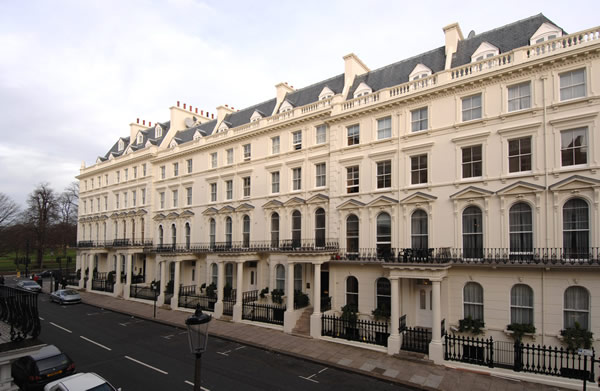 I have picked out some examples to illustrate my points. Consider first the elegant housing, right, in upmarket South Kensington in London dating from the Victorian period. Notice how each storey is has a different dimension. There is a rhythmical progression: the first is to the second as the second is to the third and so on. We pick this up naturally and the effect is pleasing, but those harmonies will have been carefully calculated by the architect.
I have picked out some examples to illustrate my points. Consider first the elegant housing, right, in upmarket South Kensington in London dating from the Victorian period. Notice how each storey is has a different dimension. There is a rhythmical progression: the first is to the second as the second is to the third and so on. We pick this up naturally and the effect is pleasing, but those harmonies will have been carefully calculated by the architect.
In the ideal there will be a minimum of three stories. A single relationship is created by two parties. In the context of dimensions two lengths together this relationship is called a ‘ratio’. In order to get a measure of the ratio we need another to compare it to. So a minimum of three stories is needed to create two ratios. That is, the first is to the second, as the second is to the first. A ‘proportion’ is a relationship between two or more ratios. So when the two ratios combine well, we have harmonious ‘proportion’. Consider a musical analogy. While combinations of two notes can be pleasing as harmonious intervals, the chord structure is generally based upon combinations of three notes. This was housing made for the well-to-do in Victorian England. If more than three stories are required, then the architect might continue to diminish the size of each successive storey, repeating the progression each time (as we see in these South Kensington houses). Alternatively, they repeat the dimension of the second for all storeys except the last. So the effect is of a large stable base, a number of storeys of even size, and then a cap which is the smaller than the other two. We see this in the 19th century mill building shown below: Salt's Mill in Yorkshire, England.
Contrast it with modern apartments which were built for a today’s smart set in Chelsea Harbour, right. When this development was built the talk was of the film stars who bought the upper level apartments with the views of London's River Thames. Lady Diana used to work out at the fashionable gym here. Yet I think they were short changed on style. Immediately one can see how each storey is identically spaced and the effect, to my eye, is one of sterility and dullness in comparison with the earlier structures. The point here is that the architects, if they had the knowledge, could just as easily have conformed to the harmonious proportion. If they had, my guess is that the value of these houses would be much higher, because they would be more sought after.
With the establishment of railways in Victorian Britain, seaside town grew up as day trip or holiday destinations a train ride from the main population centres. I grew up in the northwest of England, near the cities of Liverpool and Manchester. Llandudno, on the coast of North Wales is such a resort that grew to serve these populations. The buildings shown left are seafront hotels and one can see the same variation in the stories as we saw in South Kensington. Just to give people a sense of the place (and because it reminds me of home and like to look at them) I have included at the bottom some more photos. They are taken. Even the pier has octagonal geometric art, which looks as though its straight from Islamic Marrakesh on the cast iron railings (complete with seagull).
 I would like to make an appeal to architects to start reincorporating these proportional ideas into their designs. How much better might the environment of our inner cities be if even mass housing conformed to them? And just to inspire you, here is mass housing from the 19th century. These workers cottages, shown at the top and below left, were built by a mill owner, Titus Salt in Yorkshire in northern England. The mill he made, shown left and above, is so beautiful that it is now an art gallery and this and the village he built for the workers is designated a World Heritage Site. The end terrace at the top of this article is one such home. Those that have only two stories are the cheapest housing and smallest homes. Nevertheless, the architects still went to the trouble of varying the storey size according to traditional ideas. And they are appealing enough to be desirable homes if placed on today's open market. These simply followed design rules not only improve the environment, they add value!
I would like to make an appeal to architects to start reincorporating these proportional ideas into their designs. How much better might the environment of our inner cities be if even mass housing conformed to them? And just to inspire you, here is mass housing from the 19th century. These workers cottages, shown at the top and below left, were built by a mill owner, Titus Salt in Yorkshire in northern England. The mill he made, shown left and above, is so beautiful that it is now an art gallery and this and the village he built for the workers is designated a World Heritage Site. The end terrace at the top of this article is one such home. Those that have only two stories are the cheapest housing and smallest homes. Nevertheless, the architects still went to the trouble of varying the storey size according to traditional ideas. And they are appealing enough to be desirable homes if placed on today's open market. These simply followed design rules not only improve the environment, they add value!
The entrepreneurial spirit of 19th century Britain tends to get a bad press nowadays. No doubt the conditions of Titus Salt’s mill workers would not have been the same as those of today, but these houses do not speak of a mill owner who is seeking to exploit his workforce.
William Blake wrote in a much quoted line of England’s ‘dark, satanic, mills’. I would prefer to think that the end of the poem is more accurate and that Jerusalem was ‘builded here’. Furthermore, Titus Salt is an example that we can follow and try to build Jerusalem today.
The Way of Beauty course costs $99 for 25 hours continuing education credit from Thomas More College of Liberal Arts, read more about it on the Online Course page of this blog or sign on direct by following the link here.
A Beautiful Pattern of Prayer - the Path to Heaven is a Triple Helix…
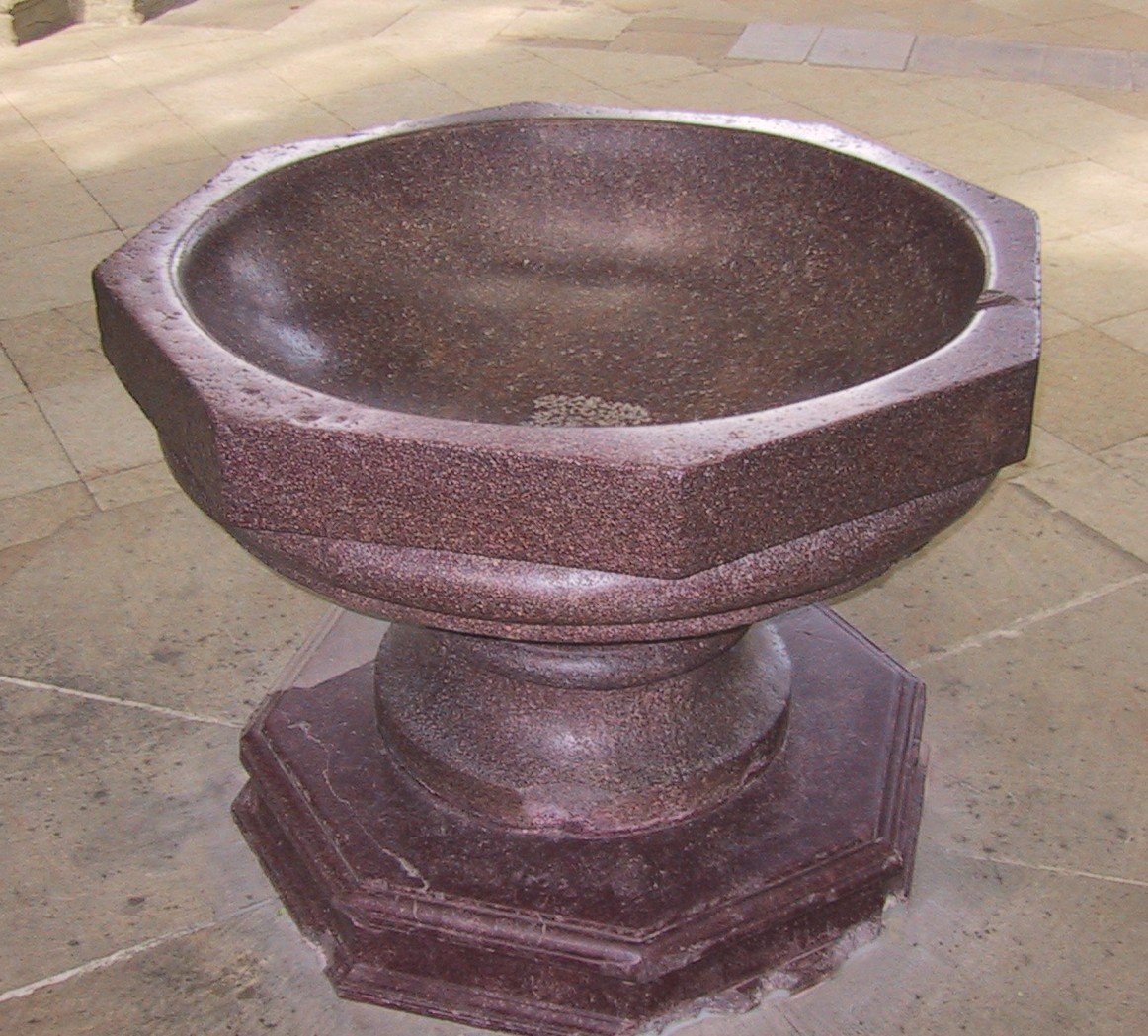 ...And it passes through an octagonal portal.
...And it passes through an octagonal portal.
Liturgy, the formal worship of the Church - the Mass and the Liturgy of the Hours, the Eucharist at its centre - is the ‘source and summit of Christian life’. We are made by God to be united with him in heaven in a state of perfect and perpetual bliss, a perfect exchange of love. All the saints in heaven are experiencing this and liturgy is what they do. It is what we all are made to do; this how it is the summit of human existence. Our earthly liturgy is a supernatural step into the heavenly liturgy, this unchanging yet dynamic heavenly drama of love between God and the saints; and the node, the point at which all of the cosmos is in contact with the supernatural is Christ, present in the Eucharist. It is more fantastic than anything ever imagined in a sci-fi drama. There is no need to watch Dr Who to see a space-time vortex, when I take communion at Mass (assuming I am in the proper state of grace) I pass through one. And there’s no worry about hostile aliens, that battle is fought and won.
Everything else that the Church offers and that we do is meant to deepen and intensify our participation in this mystery. Through the participation in the liturgy, we pass from the temporal into a domain that is outside time and space. Heaven is a mode of existence where all time, past and future is compressed into single present moment; and all places are present at a single point.
Our participation in this cannot be perfect in this life, bound as we are by the constraints of time and space. We must leave the church building to attend to the everyday needs of life. However, this does not, in principle, mean that we cannot pray continuously. The liturgy is not just the summit of human existence; it is the source of grace by which we reach that summit. In conforming to the patterns and rhythms of the earthly liturgy in our prayer, we receive grace sufficient to sanctify and order all that we do, so that we are led onto the heavenly path and we lead a happy and joyous life. This is also the greatest source of inspiration and creativity we have. We will get thoughts and ideas to help us in choices that we make at every level and which permeate every action we take. Then our mundane lives will be the most productive and fulfilling they can be.
How do we know what these liturgical patterns are? We take our cue from nature, or from scripture. Creation bears the thumbprint of the Creator and through its beauty it directs our praise to God and opens us to His grace. The patterns and symmetry, grasped when we recognize its beauty, are a manifestation of the divine order.
Traditional Christian cosmology is the study of the patterns and rhythms of the planets and the stars with the intention of ordering our work and praise to the work and praise of the saints in heaven. This heavenly praise is referred to as the heavenly liturgy. The liturgy that we participate, which is connected supernaturally to the heavenly liturgy is called the earthly liturgy. The liturgical year of the Church is based upon these natural cycles of the cosmos. By ordering our worship to the cosmos, we order it to heaven. The date of Easter, for example, is calculated according to the phases of the moon. The earthly liturgy, and for that matter all Christian prayer, cannot be understood without grasping its harmony with the heavenly dynamic and the cosmos. In order to help us grasp this idea that we are participating in something much bigger that what we see in the church when we go to Mass, the earthly liturgy should evoke a sense of the non-sensible aspect of the liturgy through its dignity and beauty and especially the beauty and solemnit of the art and music we use with it. All our activities within it: kneeling, praying, standing, should be in accordance with the heavenly standard; the architecture of the church building, and the art and music used should all point us to what lies beyond it and give us a real sense that we are praising God with all of his creation and with the saints and angels in heaven. When we pray in accordance with these patterns we are opening ourselves up to God’s helping hand at just the moment when it is offered. This is the prayer that places us in directly in beam of the heat lamp of God’s grace.
 The harmony and symmetry of the heavenly order can be expressed numerically. For example, because of the seven days of creation in Genesis there are seven days in the week (corresponding also to a half phase of the idealised lunar cycle). The Sunday mass is the summit of the weekly cycle. In the weekly cycle there is in addition day, the so-called eighth ‘day’ of creation, which symbolises the new order ushered in by the incarnation, passion, death and resurrection of Christ. Sunday the day of his resurrection, is simultaneously the eighth and first day of the week (source and summit). Eight, expressed as ‘7 + 1’ is a strong governing factor in the Church’s earthly liturgy. (It is why baptismal fonts and baptistries are constructed in an octagonal shape and why you might have octagonal patterns on a sanctuary floors.)
The harmony and symmetry of the heavenly order can be expressed numerically. For example, because of the seven days of creation in Genesis there are seven days in the week (corresponding also to a half phase of the idealised lunar cycle). The Sunday mass is the summit of the weekly cycle. In the weekly cycle there is in addition day, the so-called eighth ‘day’ of creation, which symbolises the new order ushered in by the incarnation, passion, death and resurrection of Christ. Sunday the day of his resurrection, is simultaneously the eighth and first day of the week (source and summit). Eight, expressed as ‘7 + 1’ is a strong governing factor in the Church’s earthly liturgy. (It is why baptismal fonts and baptistries are constructed in an octagonal shape and why you might have octagonal patterns on a sanctuary floors.)
Without Christ, the passage of time could be represented by a self enclosed weekly cycle sitting in a plane. The eighth day represents a vector shift at 90° to the plane of the circle that operates in combination with the first day of the new week. The result can be thought of as a helix. For every seven steps in the horizontal plane, there is one in the vertical. It demonstrates in earthly terms that a new dimension is accessed through each cycle of our participation temporal liturgical seven-day week.
 The 7+1 form operates in the daily cycle of prayer in the Divine Office too. Quoting Psalm 118, St Benedict incorporates into his monastic rule the seven daily Offices of Lauds, Prime, Tierce, Sext, None, Vespers, and Compline; plus an eighth, the night or early-morning Office, Matins.
The 7+1 form operates in the daily cycle of prayer in the Divine Office too. Quoting Psalm 118, St Benedict incorporates into his monastic rule the seven daily Offices of Lauds, Prime, Tierce, Sext, None, Vespers, and Compline; plus an eighth, the night or early-morning Office, Matins.
Prime has since been abolished in the Roman Rite, but usually the 7+1 repetition is maintained by having daily Mass (not common in St Benedict’s time). Eight appears in the liturgy also in the octaves, the eight-day observances, for example of Easter. Easter is the event that causes the equivalent vector shift, much magnified, in the annual cycle. The Easter Octave is eight solemnities – eight consecutive eighth days that starts with Easter Sunday and finishes the following Sunday.
These three helical paths run concurrently, the daily helix sitting on the broader weekly helix which sits on the yet broader annual helix. We are riding on a roller coaster triple corkscrewing its way to heaven. This, however, is a roller coaster that engenders peace.
For those who are not aware of this, more information on this topic and how to conform you're life to this pattern, read The Little Oratory; A Beginner's Guide to Prayer in the Home and especially the section, A Beautiful Pattern of Prayer.
Pictures: The baptismal font, top, is 11th century, from Magdeburg cathedral. The floor patterns are from the cathedral at Monreale, in Sicily and from the 12th century. The building is the 13th century octagonal baptistry in Cremona, Italy.
12th century Christian geometric art
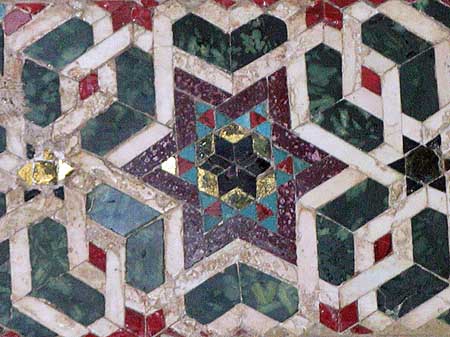 Some readers will already be aware of the Christian tradition of geometric and patterned art (see longer articles in the section Liturgy, Number, Proportion on the archive site). This was an adaptation of the patterned geometric art that we see in the pre-Christian classical period. TMC is, in a small way. The Way of Beauty class, students reproduce some of the patterns seen at the Romanesque Cappella Palatina in Sicily.The principles behind this geometric design echo the patterns and harmonies that are the basis of proportion and compositional design in traditional architecture and art (and they are surprisingly simple to learn – you do not need special artistic ability). Although all artists would benefit from this knowledge, this is not simply an artistic pursuit. It relates to the study of the traditional education called the ‘quadrivium’.
Some readers will already be aware of the Christian tradition of geometric and patterned art (see longer articles in the section Liturgy, Number, Proportion on the archive site). This was an adaptation of the patterned geometric art that we see in the pre-Christian classical period. TMC is, in a small way. The Way of Beauty class, students reproduce some of the patterns seen at the Romanesque Cappella Palatina in Sicily.The principles behind this geometric design echo the patterns and harmonies that are the basis of proportion and compositional design in traditional architecture and art (and they are surprisingly simple to learn – you do not need special artistic ability). Although all artists would benefit from this knowledge, this is not simply an artistic pursuit. It relates to the study of the traditional education called the ‘quadrivium’.
The quadrivium, four of the seven liberal arts (geometry, music, number and cosmology), is concerned with the study of cosmic order as a principle of beauty, and which is expressed mathematically. The patterns and rhythms of the liturgy of the Church reflect this order too. Christian geometric art is an abstract (in the sense of non-figurative visual representation) manifestation of Christian number symbolism. This aspect of traditional education came from the ancients too. Pope Benedict XVI, again in one of his weekly papal addresses, described how St Boethius worked to bring this aspect of Greco-Roman culture into a Christian form of education, by writing manuals on each of these disciplines. In the medieval university, he seven liberal arts were the basis of qualification of the Bachelor of Arts (the Trivium), the Master of Arts (for the Quadrivium) and these then were the preparation for further study in the higher subjects of Theology or Philosophy, for which one could receive a Doctorate.
Geometry is not now, to my knowledge, a living tradition as a Christian art form. By the time of the Enlightenment the acceptance of number symbolism had fallen away and it died out.
 I recently taught an undergraduate class about Islamic geometric patterned art at Thomas More College. This tradition, an example from a tile at the the Alhambra in Granada is shown right, is derived from the Byzantine patterned art of the lands they conquered (and of course the classical mosaics and other patterned art that preceded them). Because Islam was forbidden completely, in its strictest interpretation, from any figurative art, their focus on abstract art forms was intensified. Islamic craftsmen took what they had taken from the Byzantine craftsmen and developed it into something more complex than had previously existed.
I recently taught an undergraduate class about Islamic geometric patterned art at Thomas More College. This tradition, an example from a tile at the the Alhambra in Granada is shown right, is derived from the Byzantine patterned art of the lands they conquered (and of course the classical mosaics and other patterned art that preceded them). Because Islam was forbidden completely, in its strictest interpretation, from any figurative art, their focus on abstract art forms was intensified. Islamic craftsmen took what they had taken from the Byzantine craftsmen and developed it into something more complex than had previously existed.
The question I asked that first class was: can we safely take it back? That is, in order to reestablish this as a Christian form, can we look to the Islamic art form and re-form it into Christian tradition again?
I was pleased that in response my class said, yes. (Teachers are always pleased when their class agrees with them!) They understood further that while we can adopt some of the forms, we don’t have to adopt the Islamic numerical symbolism as well. Islamic number symbolism is similar, but crucially different from the Christian symbolism. (The number three and the Trinity come to mind immediately.) That is, it is always important to make sure that due proportion is used – that the number symbolism contained within the symmetry of the pattern is appropriate to the place where it is used, when understood in Christian terms.
For the final project of the semester I suggested to them that they consider how to incorporate some of the patterns they are learning to draw one that could be used in the floor of the sanctuary of a church. (The class in the Way of Beauty summer program will be doing something similar.)
The day after introducing the topic to the TMC students, I stumbled across this website, www.thejoyofshards.co.uk which is a great resource of images of mosaics and opus sectile work. Its gallery ranges from the floors in the offices of a Victorian architect in Norwich to Roman villas and the great churches of the world. The section on Sicilian mosaics has 80 photographs of the Palatine Chapel in Palermo. This revealed that precisely what my class was proposing had been done by the Norman king, Roger II of Sicily when he built his private chapel in the 12th century. He employed not only Christian mosaicists and Cosmati pavement specialists who produced geometric art in the Christian tradition, but also Islamic craftsmen. He instructed them to produce patterns obviously derived from those that can be seen in mosques and adapted for Christian use. This a model that would be well worth further study and I hope any architects reading this might consider commissioning something like this. I have included some photographs below of the chapel, and one pattern from a mosque for comparison; and you can see more at joyofshards.co.uk.
Below are examples of opus sectile (cut work) from the Palatina)
An Ordinary Street in the London Suburb of Hanwell
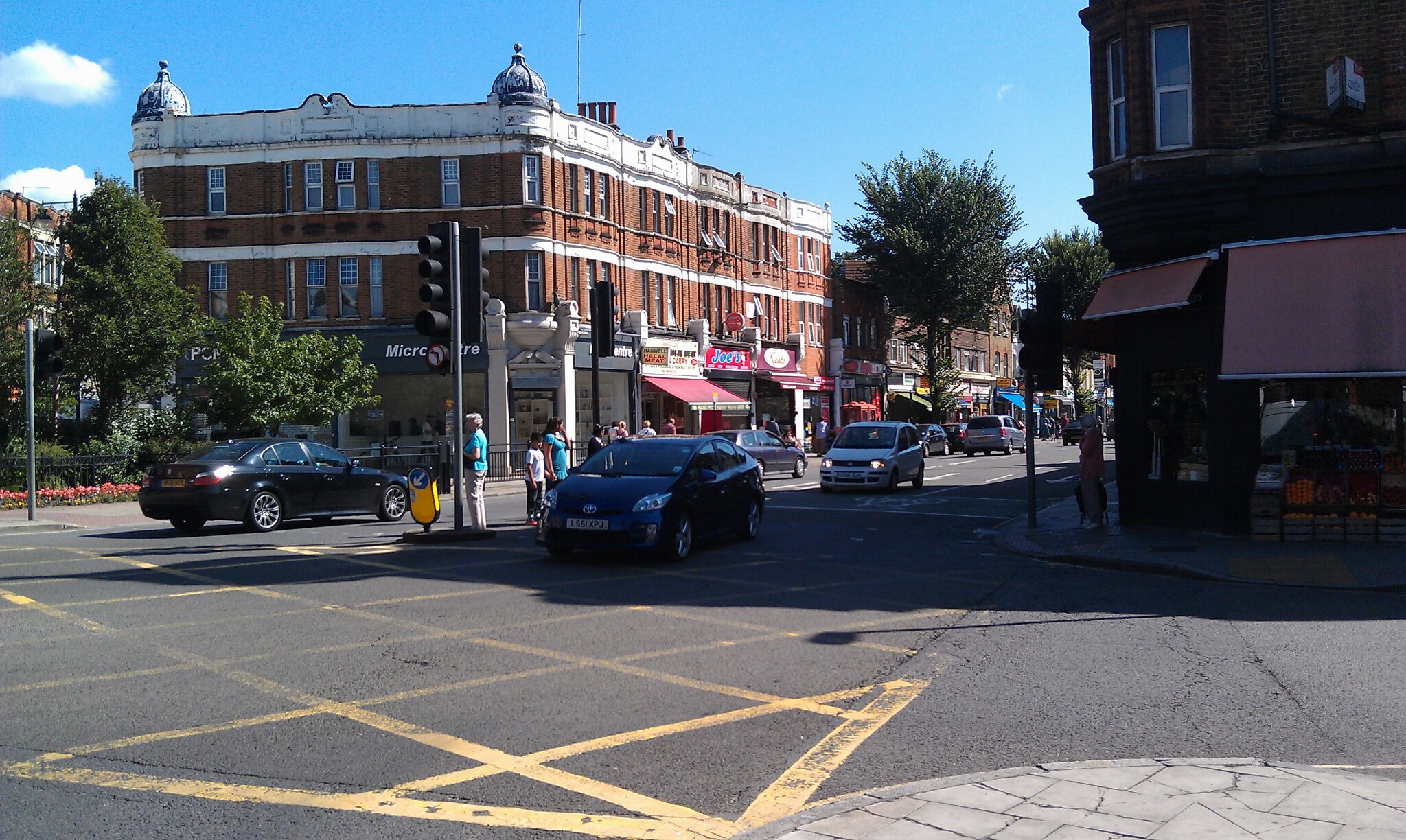 After the last view of Nashua, NH mainstreet here are some views of Hanwell in west London. They were taken over the summer when I was on my way to Heathrow airport.
When I teach the class on harmony and proportion in architect at Thomas More College, we do study the traditional principles as manifested in the great buildings of the past, but I am as anxious to establish in the idea also that this is not just something for cathedrals and grand civic buildings. Even the buildings that we use in everyday life - affordable mass housing, the shops, offices, businesses and factories can conform to these simple principles and create a beautiful and livable environment. I believe that cities are where most of us are meant to live - the future is not, and nor ought to be, one of a new high-tech agrarianism. However, I do not believe that modern cities need be the inhuman places that we tend to think is inevitable. This is where the consideration of the beauty of ordinary things and places becomes so important.
After the last view of Nashua, NH mainstreet here are some views of Hanwell in west London. They were taken over the summer when I was on my way to Heathrow airport.
When I teach the class on harmony and proportion in architect at Thomas More College, we do study the traditional principles as manifested in the great buildings of the past, but I am as anxious to establish in the idea also that this is not just something for cathedrals and grand civic buildings. Even the buildings that we use in everyday life - affordable mass housing, the shops, offices, businesses and factories can conform to these simple principles and create a beautiful and livable environment. I believe that cities are where most of us are meant to live - the future is not, and nor ought to be, one of a new high-tech agrarianism. However, I do not believe that modern cities need be the inhuman places that we tend to think is inevitable. This is where the consideration of the beauty of ordinary things and places becomes so important.
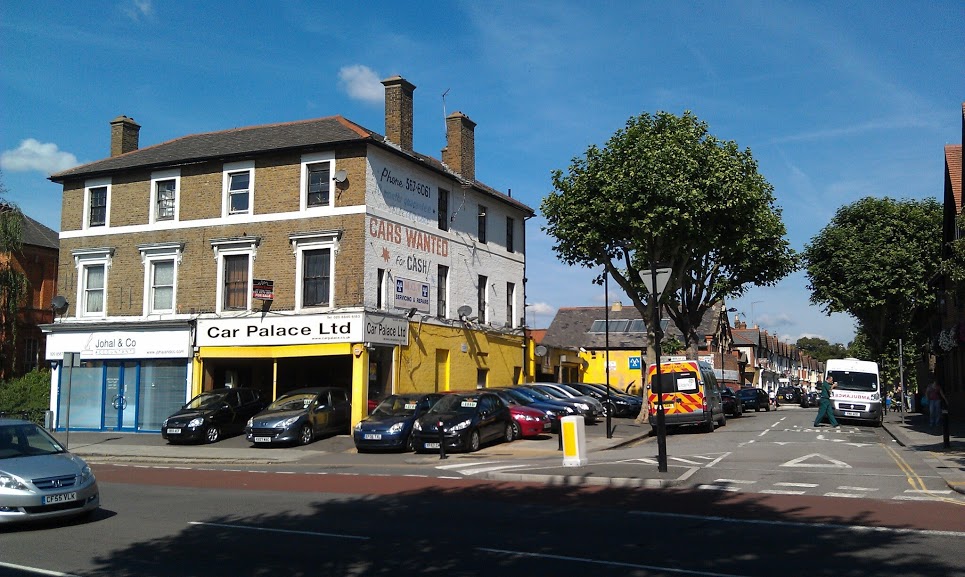 I stopped at a roadside cafe for an English breakfast on my to catch my plane home and it was a sunny morning. What was interesting to note was that the basic structures of the all the buildings conformed to traditional harmonious proportions. I am guessing they were built around the turn of the last century. As you look at each one you can see the triple layered proportion with each storey a different size in the traditional manner. These were never grand buildings, just ordinary high street buildings built for every day use. Even though the modern businesses that occupy them have made no attempt to accentuate or conform to the harmonious proportions in their modifications, what remains still makes Hanwell High Street nice enough for the Big Bites Cafe to put tables outside so that patrons could enjoy the sunshine. I would always maintain that if they knew it, they would attract even more business if only they would take this into account. The beautification of the high street is one of the main ways that towns seek to preserve the town centres and fight against the out-of-town malls to maintain a community feel. This is known, but rarely is this aspect of how it might be done understood.
I stopped at a roadside cafe for an English breakfast on my to catch my plane home and it was a sunny morning. What was interesting to note was that the basic structures of the all the buildings conformed to traditional harmonious proportions. I am guessing they were built around the turn of the last century. As you look at each one you can see the triple layered proportion with each storey a different size in the traditional manner. These were never grand buildings, just ordinary high street buildings built for every day use. Even though the modern businesses that occupy them have made no attempt to accentuate or conform to the harmonious proportions in their modifications, what remains still makes Hanwell High Street nice enough for the Big Bites Cafe to put tables outside so that patrons could enjoy the sunshine. I would always maintain that if they knew it, they would attract even more business if only they would take this into account. The beautification of the high street is one of the main ways that towns seek to preserve the town centres and fight against the out-of-town malls to maintain a community feel. This is known, but rarely is this aspect of how it might be done understood.
For the curious I have included a photo of the menu, I chose the Tradition English complete with B. Pudding, ie Black Pudding...ah how I miss England.
Beauty Comes in Threes
Look at this photograph of St Clare's in Assisi, which is top in the series of photographs below, and at the Basilica of St Francis of Assisi in Santa Fe New Mexico, which is second. The first is 13th century and second was completed in 1886.
If one takes in each case the lower section (containing the door) it is bigger than the second, containing a rose window, which in turn is bigger than the third containing a smaller round window. Even though the lower section is subdivided in the Santa Fe Basilica, the main door unifies the two elements into a single larger one. In both there is a rhythmical progression upwards so that the first is to the second as the second is to the first.
Both these churches have proportions in which there are three sections of different size in consonant relationships with each other. Proportion is defined as a consonant relationship between to two ratios. As a ratio is a relationship between two magnitudes, there is a minimum of three magnitudes needed to create two ratios.The beauty of architecture therefore is analogous to the beauty of music in which three notes are needed to define a chord. If you have just two notes you can have pleasing relationships - harmonious intervals - but the full chord needs a third not so that we know if it is participating in, for example, a major or a minor chord. We have seen this musical connection to architecture before in consideration, for example, of the octave, here.
This three tiered design principle can be applied to just about anything - below are couple of buildings. The first is the grand Attingham House in Shropshire (seen before in the octave article); the second is an 18th century house in Frederick, MD; the third is in Newburyport, MA.
In each of the buildings above there is very little decoration - the elegance is derived almost exclusively from the proportions.
On a recent visit to the Cloisters Museum in New York I saw the following beaker and even a plant cut to follow the same design principle. In this way the whole culture can participate in the liturgical form which is at its root.
Now compare with this modern house below. This is in Frederick, Maryland too and it looks to me as though the architect is trying to design something to complement the colonial architecture that dominates the town. Yet because he has even sized windows and stories, it lacks this elegance.
Bringing Traditional Proportion into the Design of a Rock Garden
 Traditional proportion can be incorporated into the design of just about anything once you know how. Here is an example a rockery (as we say in England) or 'rock garden', as I think Americans refer to it. It is part of the developing garden at the Thomas More College future campus at Groton, Massachusetts.
We placed rocks into a steep bank in three tiers. The relationship between the three lines is based upon traditional proportion in which the first relates to the second as the second relates to the third. The spacing and change of angle is intuitively applied. Top left are three lines I have painted in watercolour on paper to illustrate. The designers of the basic shape of the arrangement of rocks in the garden were three students at Thomas More College in( alphabetical order!) - Cecilia Black, Nicole Martin and Erin Monfils. Once three walls had been put in, it was clear that they were unstable. We get heavy snow in the winter and it was likely that the snow would collapse each little wall. So without straying from the basic shape I stepped each wall into the bank in such a way that it imitates natural outcrops of stratified rock (or that was the idea anyway - I'm just a beginner and this is as about as close as I can get what I remember in my parents' garden).
Traditional proportion can be incorporated into the design of just about anything once you know how. Here is an example a rockery (as we say in England) or 'rock garden', as I think Americans refer to it. It is part of the developing garden at the Thomas More College future campus at Groton, Massachusetts.
We placed rocks into a steep bank in three tiers. The relationship between the three lines is based upon traditional proportion in which the first relates to the second as the second relates to the third. The spacing and change of angle is intuitively applied. Top left are three lines I have painted in watercolour on paper to illustrate. The designers of the basic shape of the arrangement of rocks in the garden were three students at Thomas More College in( alphabetical order!) - Cecilia Black, Nicole Martin and Erin Monfils. Once three walls had been put in, it was clear that they were unstable. We get heavy snow in the winter and it was likely that the snow would collapse each little wall. So without straying from the basic shape I stepped each wall into the bank in such a way that it imitates natural outcrops of stratified rock (or that was the idea anyway - I'm just a beginner and this is as about as close as I can get what I remember in my parents' garden).
I also introduced some deviations from the simple original shape so that while still following the general form, it looked less rigidly applied. So occasionally the line twists in a concave rather than convex way. In doing this I was trying to remember what I had seen my dad do in the rockeries at home. He was using sandstone (the natural rock of the Wirral peninsula in Cheshire, England). The photographs below show the gradual progression.
First, the bed is full of giant and old lilac plants. These were removed.
Then our gang turned their attention to putting the stones in the steep bank you see at the back of the above picture. You can see also how we have gradually planted it out with perennials. The hope is that next year these will come back more strongly and fill in the gaps. I don't feeling like another season of constant weeding.
Above, the three 'walls' and below after they have been stepped and softened.
How You Can Add Proportion to a Building Through Decoration
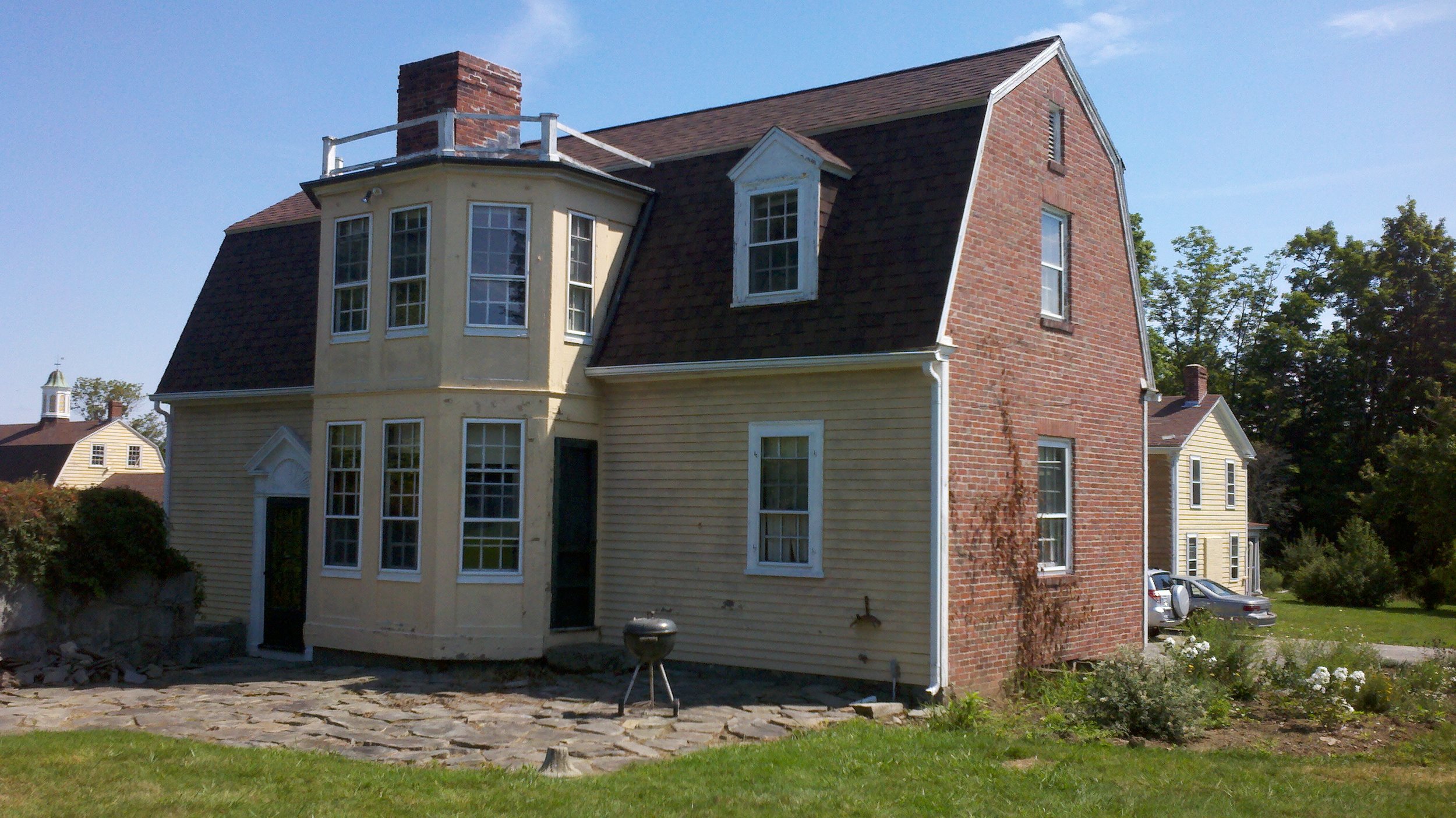 Take a look at these photographs of a farmhouse in Groton, Massachusetts. This is a 19th century house on the site that eventually will become the new campus for Thomas More College of Liberal Arts. Look first at the gable end in which there are three windows, one on each floor. Notice how the first is bigger than the second. The second is, in turn bigger than the vent at the top that aerates the loftspace. There is a sense of rhythmical progression as we go up, the first relates to the second as the second relates to third. The are three objects and two relationships. Each relationship, for example how the first window relates to the second, can be described as a mathematical ratio between two magnitudes - the magnitude of each window. Due proportion is defined as a consonant relationship between two or more ratios. When the proportion is appropriate ('due') for what contains it, in this case a house, then is pleasing to the eye. We can think of due proportion therefore as a harmonious relationship between two or more relationships.
Now look at the bay windows that are built into the wall at right angles to the gable end, which are painted a yellow cream. The windows are not the same size and so look as though they could be completed with a third which is smaller still, like those just around the corner. This implied proportion is common in buildings - you can't always afford to build three storeys (or in this case, three bay windows). So this is good, it is like having two notes that are different but still harmonious. You can't have harmony between identical things, that is why in modern buildings in which all the windows are the same size, it looks dull and sterile. However, as I look at these bay windows, something isn't quite right. Although the windows look in harmony, the top storey looks top heavy. This is because the adorning strip of wood that separates one floor from the other is placed at a level that is too low. Although the windows are of different size, the storeys are of equal size. When I look, it see something that would look more natural if the the upper storey was smaller that the lower, (just as the trunk of a tree gets smaller as you go up, it gives a sense of stability). It is a shame that this is off, because everything else seems right.
Take a look at these photographs of a farmhouse in Groton, Massachusetts. This is a 19th century house on the site that eventually will become the new campus for Thomas More College of Liberal Arts. Look first at the gable end in which there are three windows, one on each floor. Notice how the first is bigger than the second. The second is, in turn bigger than the vent at the top that aerates the loftspace. There is a sense of rhythmical progression as we go up, the first relates to the second as the second relates to third. The are three objects and two relationships. Each relationship, for example how the first window relates to the second, can be described as a mathematical ratio between two magnitudes - the magnitude of each window. Due proportion is defined as a consonant relationship between two or more ratios. When the proportion is appropriate ('due') for what contains it, in this case a house, then is pleasing to the eye. We can think of due proportion therefore as a harmonious relationship between two or more relationships.
Now look at the bay windows that are built into the wall at right angles to the gable end, which are painted a yellow cream. The windows are not the same size and so look as though they could be completed with a third which is smaller still, like those just around the corner. This implied proportion is common in buildings - you can't always afford to build three storeys (or in this case, three bay windows). So this is good, it is like having two notes that are different but still harmonious. You can't have harmony between identical things, that is why in modern buildings in which all the windows are the same size, it looks dull and sterile. However, as I look at these bay windows, something isn't quite right. Although the windows look in harmony, the top storey looks top heavy. This is because the adorning strip of wood that separates one floor from the other is placed at a level that is too low. Although the windows are of different size, the storeys are of equal size. When I look, it see something that would look more natural if the the upper storey was smaller that the lower, (just as the trunk of a tree gets smaller as you go up, it gives a sense of stability). It is a shame that this is off, because everything else seems right.
However there is something that could be done to restore harmony without any new building at all. We are just in the process of repainting the house (you can see the sanded garage door and its surround painted slate grey). The whole house will be this colour and the trim will be cream. The answer is to repaint these bay windows so that the lower floor is separated from the upper, perhaps if it is painted this slate grey colour, separate them with a trim band. You paint the band of cream perhaps 10 inches wide above the wooden rail that now appears. The final photograph shows how painting can be used to create harmony even when the windows are identical in size. It is of a hotel on the seafront in Llandudno in North Wales, close to where I grew up.
This harmony of three is just as it is in the area that you think of first when harmony is mentioned - music. We hear harmony between two notes, for example a perfect fourth, a perfect fifth or an octave and it is pleasing. And this is good on its own. However, whenever I ask any musician if this is the full chord, they will always tell me that it is incomplete. You need to third note to create a second interval, so we know if we are hearing part of a major chord, or a minor chord.
This is the Somerset Hotel on the promenade at Llandudno, north Wales.
A Country House and Grounds - a Model of Manmade Harmony and Order
 And how a 'marvel of Renaissance verse' describes precisely this, by Corey French. This article started out as a simple description of a country house that I visited on a recent trip to Britain. It is in North Wales and is called Bodysgallen Hall. I was introduced to the house by a friend who took me there for the very British event of afternoon tea. What a delight that was!
A number of things struck me about it. First was the harmony between house and grounds and the surrounding countryside. The gardens are more formally laid out close to the house, then they change into the less formal English cottage style and planting (a la Gertrude Jeckyll) and then into managed woods. Even the vegetable garden was arranged in an ordered and beautiful fashion, everything in its proper place. From the grounds we could see and sheep fells on the Welsh mountains in the distance, beyond the Conway valley.
And how a 'marvel of Renaissance verse' describes precisely this, by Corey French. This article started out as a simple description of a country house that I visited on a recent trip to Britain. It is in North Wales and is called Bodysgallen Hall. I was introduced to the house by a friend who took me there for the very British event of afternoon tea. What a delight that was!
A number of things struck me about it. First was the harmony between house and grounds and the surrounding countryside. The gardens are more formally laid out close to the house, then they change into the less formal English cottage style and planting (a la Gertrude Jeckyll) and then into managed woods. Even the vegetable garden was arranged in an ordered and beautiful fashion, everything in its proper place. From the grounds we could see and sheep fells on the Welsh mountains in the distance, beyond the Conway valley.
Second, is that every aspect of what we see is man made. There is no part that has not been shaped by the activity of man. This is not the untamed beauty of nature, but something even greater: nature conforming to a higher order. It has been raised up by the work of man.
Another aspect of note is the date in which the house was made. Or rather, dates. The various wings of the house were built over centuries ranging from the 17th to the 19th centuries. I could tell because each wing year of construction placed visibly on it. Despite this there is a unity to the whole because each part uses traditional proportions. These are the proportions that go back to the ancient Greeks and are derived from observation of the order and beauty of the cosmos. (There is one part that is an exception, it seems - the tall tower in the centre, which has even sized windows).
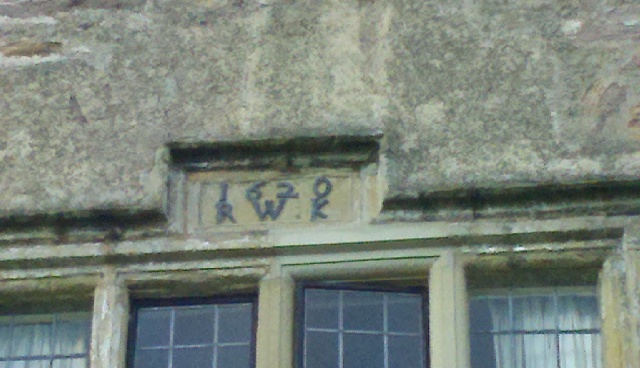 I was just contemplating this when I received an email from Corey French, who is currently working on his doctorate in English Literature at the University of Virginia, with a focus on 17th century British poetry. He had attended the first summer retreat of the Way of Beauty Atelier this year. I mentioned to him that I am a literary philistine with little regard for poetry. Undaunted he told insisted that his specialist area would be of interest to me. This is because, he said, they often refer to the ideal of beauty and harmony that I had been talking about in my lectures. He told me that many even have and 'architecture' (ie structure) that incorporates he sacred number theory that I had mentioned. This piqued even my interest and I had asked him to send more information.
I was just contemplating this when I received an email from Corey French, who is currently working on his doctorate in English Literature at the University of Virginia, with a focus on 17th century British poetry. He had attended the first summer retreat of the Way of Beauty Atelier this year. I mentioned to him that I am a literary philistine with little regard for poetry. Undaunted he told insisted that his specialist area would be of interest to me. This is because, he said, they often refer to the ideal of beauty and harmony that I had been talking about in my lectures. He told me that many even have and 'architecture' (ie structure) that incorporates he sacred number theory that I had mentioned. This piqued even my interest and I had asked him to send more information.
Here is the first poem he sent me. It is called Penshurst and it is by Ben Jonson. There is a link to the poem itself here. It is the subject matter, rather than the form which is of interest here. It describes how the country house is a model of beauty. In his letter to me Corey describes how it reflects exactly the ideas I had been discussing of the liturgy of the Church as an ordering principle of cosmic beauty. You can see what he has written below in italics. Before that here is the closing stanza of the poem:
Now, Penshurst, they that will proportion thee
With other edifices, when they see
Those proud, ambitious heaps, and nothing else,
May say their lords have built, but thy lord dwells.
'The poem itself is a marvel of Renaissance verse and inaugurated a minor school of English poetry--the country house poem. (Although there were other country house poems before "Penshurst," such as Emelia Lanyer's "Description of Cooke-ham," Jonson's poem establishes the conventions of the trope through the seventeenth and early-eighteenth centuries.) In any event, the overall schematic of the poem traces a movement from the grounds around Penshurst Place (ranging from the copses of Gamage and Sidney to the Medway) into the manor-house itself, culminating in the middle of the poem with a depiction of a feast and then launching into an excursus on the hospitality of the Sidneys.
First of all, the poem begins with a meditation on the virtues of Penshurst Place as an edifice compared with the "prodigy houses" of more recent construction. As the poem presents it, Penshurst's architecture manifests an organic harmony that extends through time, pulling together through a unified tradition both its ancient and more modern aspects. In this way, the house becomes an emblem of the virtues which reside therein and which subsist in the Sidney family. The other houses, "built to envious show," are merely objects of conspicuous consumption, discordant in their architectural programs and intended only to display wealth. Penshurst's own harmoniousness extends to the natural world as well, and we find the entire natural order revolving around life in the manor house, even offering itself sua sponte for the enrichment of the manor's tables. As we travel around the grounds, the poem leads us through the natural topography of the place, yet it insists upon our simultaneously recognizing it as a moral topography. The concord of the land reflects the virtuous concord of its landholders.
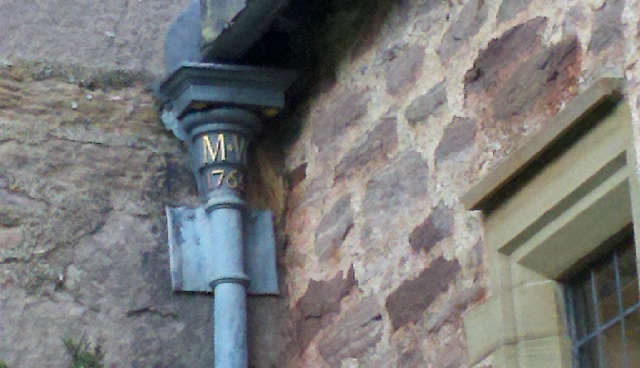 Then the poem takes us into the feast, and we find that it is the feast that resides at the heart of Penshurst, the energy which drives its entire harmony. Now, I'm absolutely convinced that Jonson intends this feast to be an image of the Eucharist. He spent several years as a recusant Catholic before reverting to Anglicanism, and I cannot help but think that he understood the intrinsic necessity of the liturgy. Indeed, what I see in this poem is precisely your concept of the liturgy as the ordering principle of the cosmos, as the source and summit of human life. The entire poem centers around this scene of feasting in which "all come in" and all are fed to satiety with "thy lord's own meat." I've written some on this poem, and to my surprise, no one has argued substantively for a reading of the poem as a profoundly liturgical and sacramental poem. Even Harp's article [see below], which raises and considers the Eucharistic elements of the poem does not, I think, unravel the full implications of this reading.
Then the poem takes us into the feast, and we find that it is the feast that resides at the heart of Penshurst, the energy which drives its entire harmony. Now, I'm absolutely convinced that Jonson intends this feast to be an image of the Eucharist. He spent several years as a recusant Catholic before reverting to Anglicanism, and I cannot help but think that he understood the intrinsic necessity of the liturgy. Indeed, what I see in this poem is precisely your concept of the liturgy as the ordering principle of the cosmos, as the source and summit of human life. The entire poem centers around this scene of feasting in which "all come in" and all are fed to satiety with "thy lord's own meat." I've written some on this poem, and to my surprise, no one has argued substantively for a reading of the poem as a profoundly liturgical and sacramental poem. Even Harp's article [see below], which raises and considers the Eucharistic elements of the poem does not, I think, unravel the full implications of this reading.
Additionally, the history of "Penshurst" criticism is a bit of a case study in the deformations of modernism. The reigning scholarly interpretation of the poem (though one that has met with its share of push-back in recent years) is the Marxist reading put forward by Raymond Williams and Don Wayne. They attack Jonson for colluding with the structures of power represented in the manor house and thereby using his poem to "write out" the inequalities of labor by depicting the land as offering itself up without human intervention and by suggesting that the life of the tenant farmer was little more than attending soirées at the manor. Immediately one realizes how truly malicious such an interpretation is; indeed, like most contemporary literary theory, it manages to base an entire interpretation of the poem on what isn't there rather than what is. Richard Harp produced a rather admirable essay in which he dismantles the Williams/Wayne approach entirely and points to the poem as a poem of festival. He suggests that Jonson hasn't "overlooked" labor to suit the ends of power but has chosen to write instead a type of Sabbath poem in which labor is given its reward of rest. The Williams/Wayne reading simply demonstrates the inevitable consequence of having recourse to no other worldview than one in which "labor" is the defining mark of human life and in which transcendence ceases to be possible.
A Course about Traditional Proportion in Architecture, by Geoff Yovanovic
 Geoff Yovanovic is a young architectural intern (with an architecture degree from the University of Miami who came to our Way of Beauty summer program last year. He recently attended a course of proportion run by the ICAA (The Institute of Classical Architecture called Theory of Proportion: A Perennial Pathway of Beauty. What he described sounded interesting so I asked him to give us a brief write up about it. If you want to know more about this, then do contact him on g.yovanovic@gmail.com. He is especially keen to here from any architects working in a traditional field who are looking to take on an intern!
Before we read it a couple of things are worth pointing out. First that word 'Perennial'. This is referring here to a particular worldview - the Perennialist philosophy. This is a modern analysis of traditional cultures which seeks common principles based upon the premise that each is offering alternative routes to the same God. Perennialists tend to join one religion or school of thought and take a traditionalist path, in order to follow what they seek to be the pure, original revelation, as it was presented before man diluted it. I have met Christian, Islamic and even Platonist perennialists. In my experience, Plato and Platonists such as Plotinus, are presented as authorities. However, for all the fact that they outwardly look like very traditionalist adherents to a religion to the degree that they hold to the perennialist philosophy, they sit outside the religions that they claim to follow (certainly this true for Christianity).
Geoff Yovanovic is a young architectural intern (with an architecture degree from the University of Miami who came to our Way of Beauty summer program last year. He recently attended a course of proportion run by the ICAA (The Institute of Classical Architecture called Theory of Proportion: A Perennial Pathway of Beauty. What he described sounded interesting so I asked him to give us a brief write up about it. If you want to know more about this, then do contact him on g.yovanovic@gmail.com. He is especially keen to here from any architects working in a traditional field who are looking to take on an intern!
Before we read it a couple of things are worth pointing out. First that word 'Perennial'. This is referring here to a particular worldview - the Perennialist philosophy. This is a modern analysis of traditional cultures which seeks common principles based upon the premise that each is offering alternative routes to the same God. Perennialists tend to join one religion or school of thought and take a traditionalist path, in order to follow what they seek to be the pure, original revelation, as it was presented before man diluted it. I have met Christian, Islamic and even Platonist perennialists. In my experience, Plato and Platonists such as Plotinus, are presented as authorities. However, for all the fact that they outwardly look like very traditionalist adherents to a religion to the degree that they hold to the perennialist philosophy, they sit outside the religions that they claim to follow (certainly this true for Christianity).  It can be confusing at times, because they will draw heavily on the authorities of the religion in question when it is consistent with the philosophy (for example often citing scripture) but in their own interpretation (through a perennialist prism so to speak), and not fully consistent with the magisterium (although they will often give the impression that they are in agreement with each religions). The people to look for who formulated this perennialist outlook are names such as Titus Burckhardt, Rene Guenon, Ananda Coomeraswamy and Frithjof Schuon. Because of their great respect for tradition and the religions of the world, they have done much good work in redirecting many genuine adherents to their own traditions. For example, It was perennialists at the Prince of Wales's school of tradition arts in London who made me aware of traditional Christian ideas of harmony and proportion. The teacher of the course below, incidentally, was taught at the Royal College of Art in London by the founder and first principal of the Prince's School.
It can be confusing at times, because they will draw heavily on the authorities of the religion in question when it is consistent with the philosophy (for example often citing scripture) but in their own interpretation (through a perennialist prism so to speak), and not fully consistent with the magisterium (although they will often give the impression that they are in agreement with each religions). The people to look for who formulated this perennialist outlook are names such as Titus Burckhardt, Rene Guenon, Ananda Coomeraswamy and Frithjof Schuon. Because of their great respect for tradition and the religions of the world, they have done much good work in redirecting many genuine adherents to their own traditions. For example, It was perennialists at the Prince of Wales's school of tradition arts in London who made me aware of traditional Christian ideas of harmony and proportion. The teacher of the course below, incidentally, was taught at the Royal College of Art in London by the founder and first principal of the Prince's School.
Second, consistent with the fact that this is a modern philosophy they will tend, in my view, to overemphasise the importance of the Golden Section in traditional design. Those who are interested to more about my views on this can read the article 'Golden or Fallen - a Note on Phi' in the articles page of this blog.
With these caveats in mind, the course Geoff describes seems to be worthy of consideration. Here is what he wrote:
'I attended recently a one day intensive on the theory of proportion presented by the Institute of Classical Architecture and Art. It was called Theory of Proportion: A Perennial Pathway of Beauty. The ICAA describes itself as an organization which is "dedicated to advancing the classical tradition in architecture, urbanism and their allied arts". With chapters throughout the USA, the ICAA presents educational opportunities ranging from the Beaux Arts Atelier in New York City to walking tours through historic neighborhoods to a variety of classes like the one on proportion which I attended in Atlanta hosted by the Southeast Chapter.
The intensive was taught by Steve Bass an architect from New York City, and a Fellow at the Institute of Classical Architecture and Art. Mr. Bass was trained in the modern practice of architecture, but soon found it empty, he told us, and searched for a deeper meaning in design. This lead to study at the Royal College of Art in London which has a focus on the ancients such as Plato and Plotinus (a Platonist from the 3rd century AD) and their ideas on geometry, presented through the prism of the modern Perennialist philosophy.
Starting with a rapid survey of ancient history and philosophy, the class soon settled on a discussion of beauty and its importance. Drawing from the writings of Plotinus, connections were quickly made between beauty and the good: "This is the soul's ugliness, not being pure and unmixed, like gold, but full of earthiness; if anyone takes the earthy stuff away the gold is left and is beautiful, when it is singled out from other things and is alone by itself."
For the ancient Greek, described by Plotinus, beauty was the memory of unity. It was the joyous state of the soul as it remembers unity. In our Christian tradition, beauty is our recognition of God.
The foundation for the rest of the class was laid with an introduction classical number theory described in detail by Plato and attributed to Pythagoras. Using this theory and tying it to Genesis and Plato's Timaeus, Mr Bass presented a symbolic story of creation using the arithmetical ideas of the monad, oneness, the dyad, twoness, the triad, threeness, and on through the decade. For example, fourness or the tetrad was connected with the fourth day of creation in Genesis. On the fourth day, "God said, Let the waters under the heaven be gathered together unto one place, and let the dry land appear." Geometrically, the tetrad or fourness is represented by the four sided polygon or a square. Applying these theories into recognizable form in architecture, we can look at a dome in a church especially an early Christian church such as the Hagia Sophia. A dome is a sphere resting upon a cube. In an even simpler geometric study, we see a circle and a square. Geometrically, the dome is composed of a square, the tetrad, meeting a circle, the monad. Applying Genesis to the dome in a church, a dome is the location where heaven, the monad or oneness, meets the dry land, the tetrad or square. Therefore, the geometry symbolizes the meeting of Heaven and earth, or the meeting of the Communion of Saints which occurs during each Mass. In some early churches, this union of Heaven and earth was emphasized by the decoration on the pendentives which were the four triangular transition supports between the vertical columns and the dome. Depictions of this unity such as the Annunciation of Mary, the Nativity, and other Christmas scenes were painted on the pendentives to emphasize this symbolic geometric parallel.
The class transitioned into a study of the evolution of different geometric creations and their integration into architecture. From a circle, different geometric creations were derived such as the 45-45-90, 30-60-90 triangles, .618 or phi, and finally arriving at the golden section. Using the golden section as the primary tool, it was proposed that the ancient Greek temples were designed through geometric derivations of a circle. Demonstrations using a few simple drafting tools such as a 45 degree triangle, a compass, and a scaler showed the evolution of a Doric, Ionic, and Corinthian temple originating from a circle. The entire temple from the overall recognizable temple form to the acanthus leaves in the Corinthian capital were derived starting with a single circle.
While the primary goal of the class was to emphasize the importance of beauty in design, it was not presented through a Christian perspective. It focused on many ancient ideas which, for a large part, were eventually baptized by St. Augustine and integrated into Christian thought. Despite the differences, both schools of thought present proportion and geometry as a path to beauty. And beauty is an essential thing.

The Importance of Seeing Paintings in Context
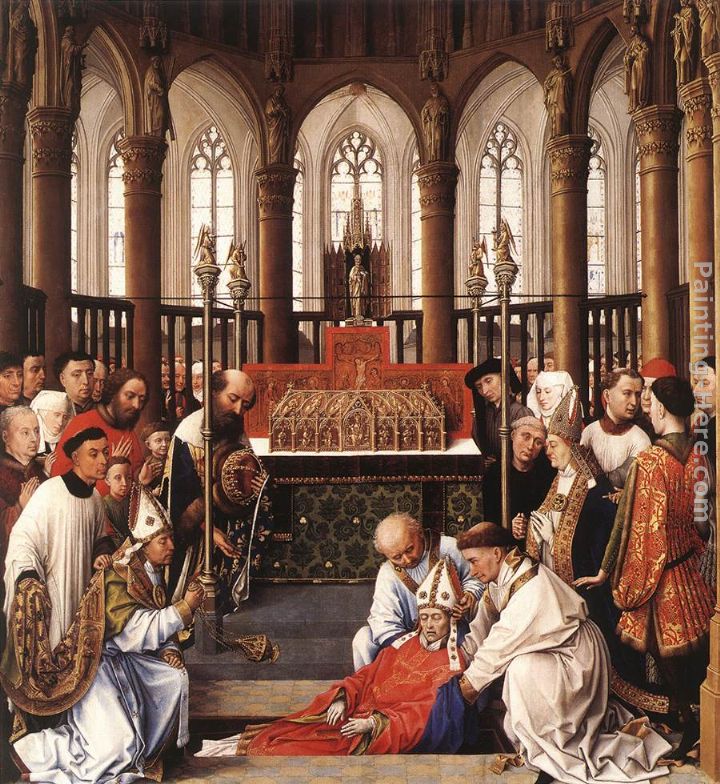 I would like to draw readers' attention to a piece in The Catholic Herald written by Fr Anthony Symondson. He has reviewed the exhibition Devotion by Design which is at the National Gallery in London and which runs until October 2nd. The exhibition is unusual in that, commendably, altarpieces are displayed along with simulated altars so that visitors can get a feel for the setting in which they ought be placed. One of the pieces on display is Rogier van der Weyden's Exhumation of St Hubert, shown left.
While the only way to get a full sense of the importance of context for such a piece is to see it in church while praying the liturgy, what the museum has done does at least indicate the intended purpose of the piece. It also makes the point that context of a painting is important and open our imaginations to what it might have been like originally. I am pleased to see a gallery thinking about this.
I would like to draw readers' attention to a piece in The Catholic Herald written by Fr Anthony Symondson. He has reviewed the exhibition Devotion by Design which is at the National Gallery in London and which runs until October 2nd. The exhibition is unusual in that, commendably, altarpieces are displayed along with simulated altars so that visitors can get a feel for the setting in which they ought be placed. One of the pieces on display is Rogier van der Weyden's Exhumation of St Hubert, shown left.
While the only way to get a full sense of the importance of context for such a piece is to see it in church while praying the liturgy, what the museum has done does at least indicate the intended purpose of the piece. It also makes the point that context of a painting is important and open our imaginations to what it might have been like originally. I am pleased to see a gallery thinking about this.
Good sacred art is painted so that it engages the person at precise moments in the liturgy and then directs their attention beyond the work of art to something greater – by for example making sure in the case of the reredos that there is sufficient contrast so that the host is visible when held aloft. This is something that artist should always be aware of. Even within a painting, one part in isolation looks different when viewed in relation to all the other parts. Artists are taught to consider the unified view. Once the form of a painting has been established – the basic shapes, tones and colours – then the so much of the final part of the process is subtle alteration using colour washes, glazes and scumbles so that each part speaks to the others in such way that the piece has unity.
 Similarly, the artist must try to consider the wider context into which it is to be placed. Works look different when placed on dark or light backgrounds, or when there are other paintings around. Also and most importantly, the position relative to the liturgy must be considered.
Similarly, the artist must try to consider the wider context into which it is to be placed. Works look different when placed on dark or light backgrounds, or when there are other paintings around. Also and most importantly, the position relative to the liturgy must be considered.
Consider Caravaggio’s Calling of St Matthew. This is a great painting even when viewed in isolation, but the ideal position for this, I suggest, is in a side chapel on the left hand ie north side of the church, on an east wall so that at the point of elevation someone in the main body of the church could see both the painting, in the left hand side of their vision, and the elevated host. This would give the appearance that the source of light was the Blessed Sacrament itself - the Light calling St Matthew - thus reinforcing visually the fact that Christ is really present within it.
One of the wonders of nature for me is how each object can be beautiful and complete in itself, can also be a beautiful part of a wider landscape and, furthermore, contains within it beautiful parts in perfect relation to each other. We need only think of a rose: each petal within it is beautiful and placed so that together they form the flower; and then each bloom is placed in relation to the others, to the stems and leaves so that we have a beautiful rosebush.
When I take commissions I do my best to have this model in mind and consider carefully not just what the form of the painting itself, also where it will be placed and how it can be most beautiful in its final setting.


























